
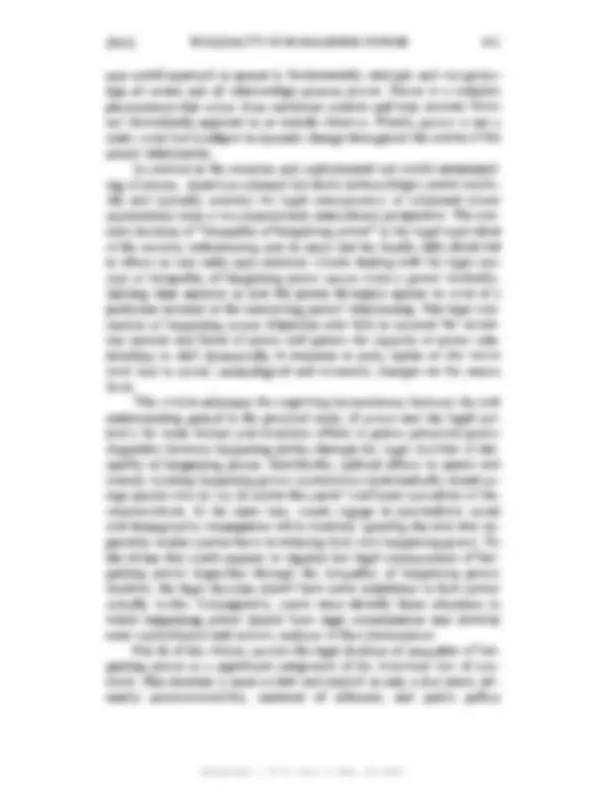
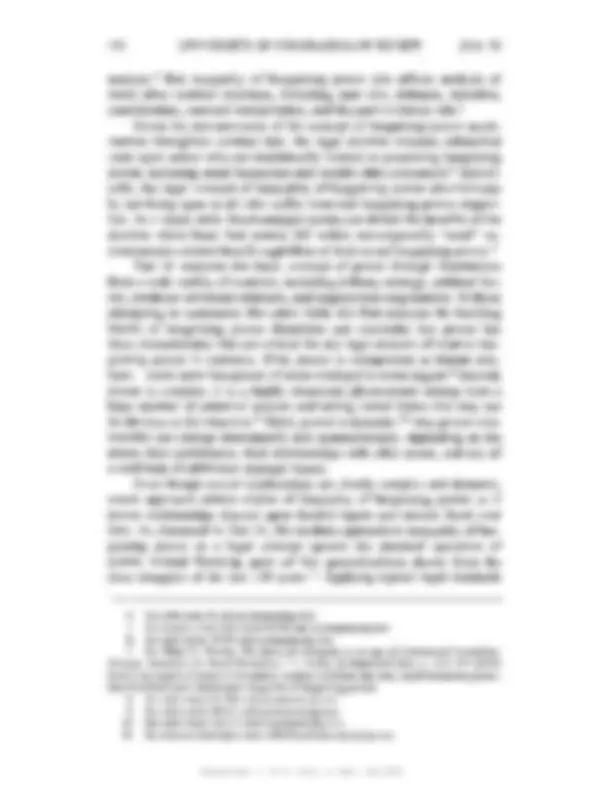
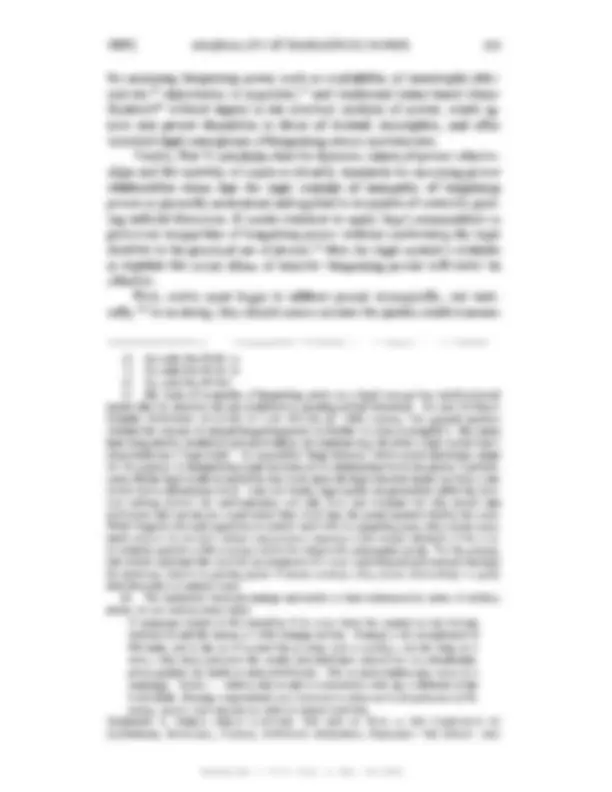
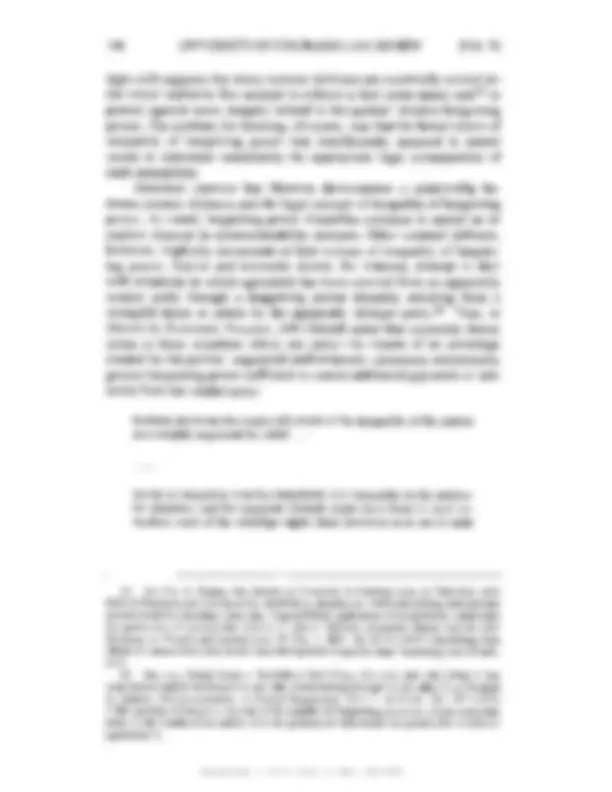
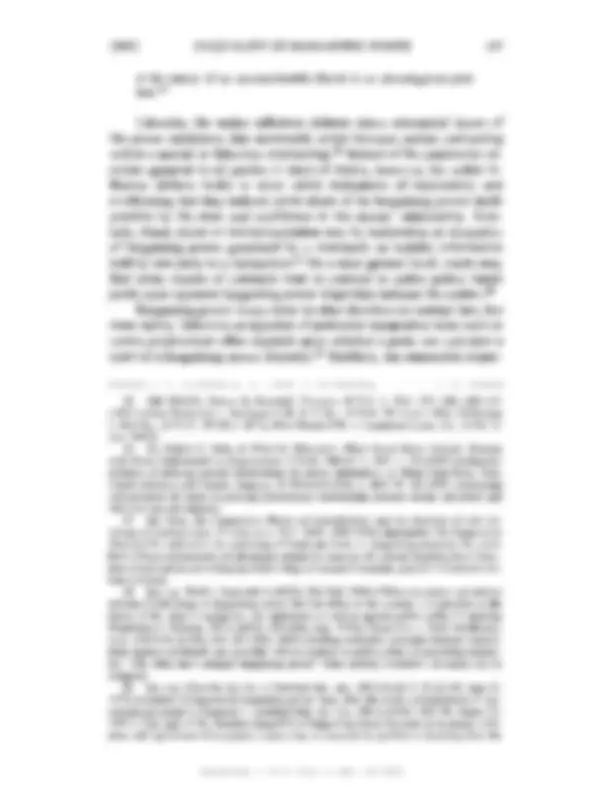
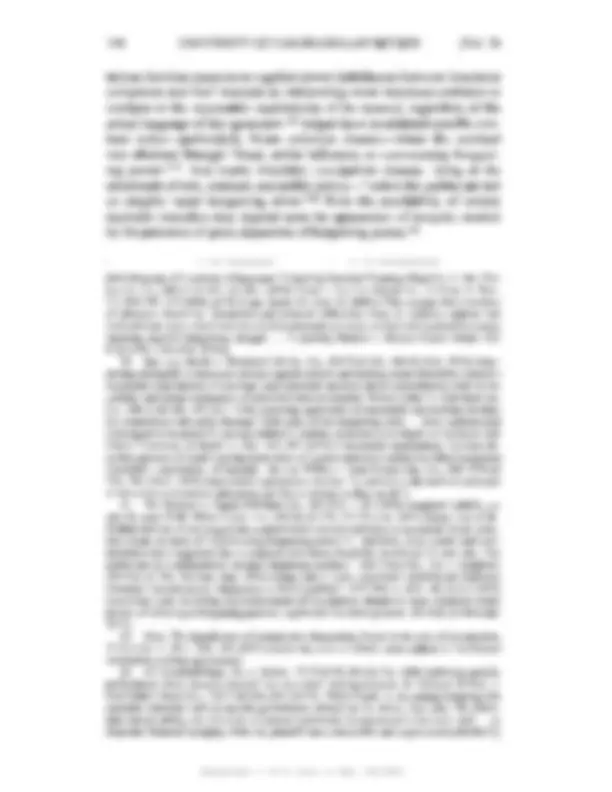
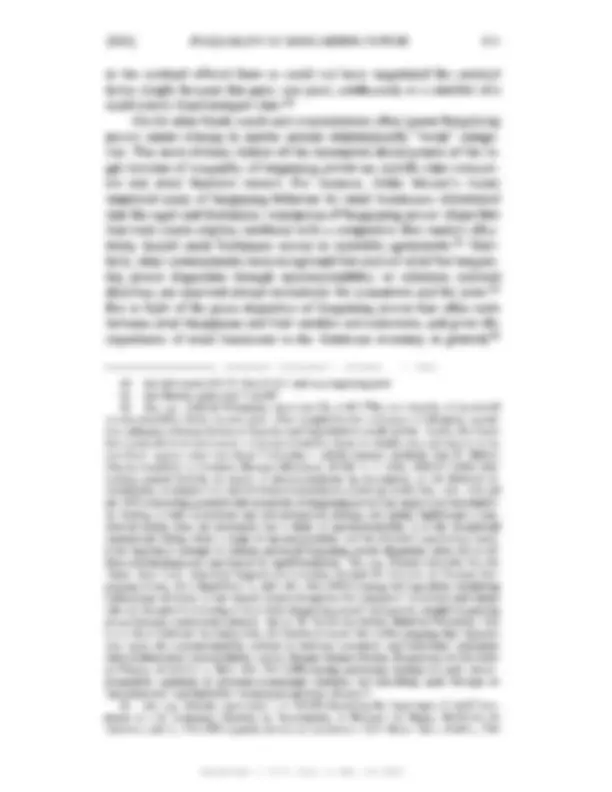
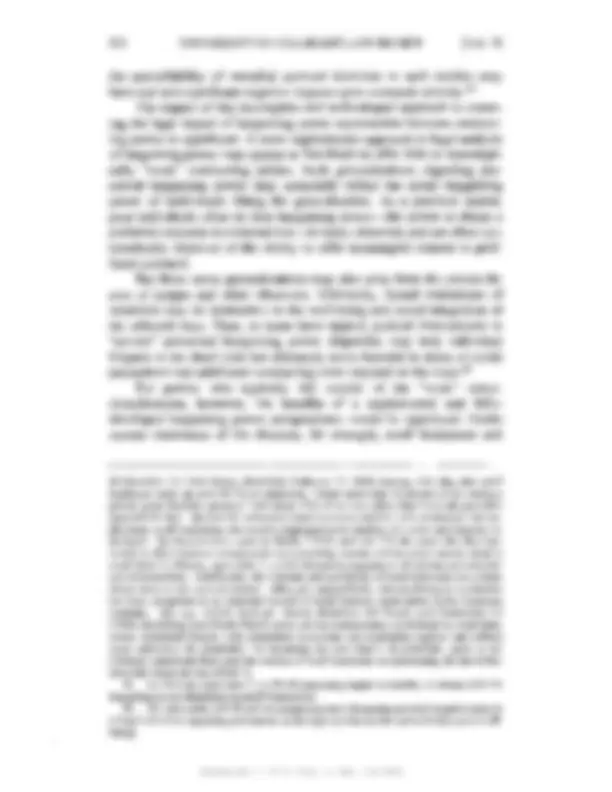
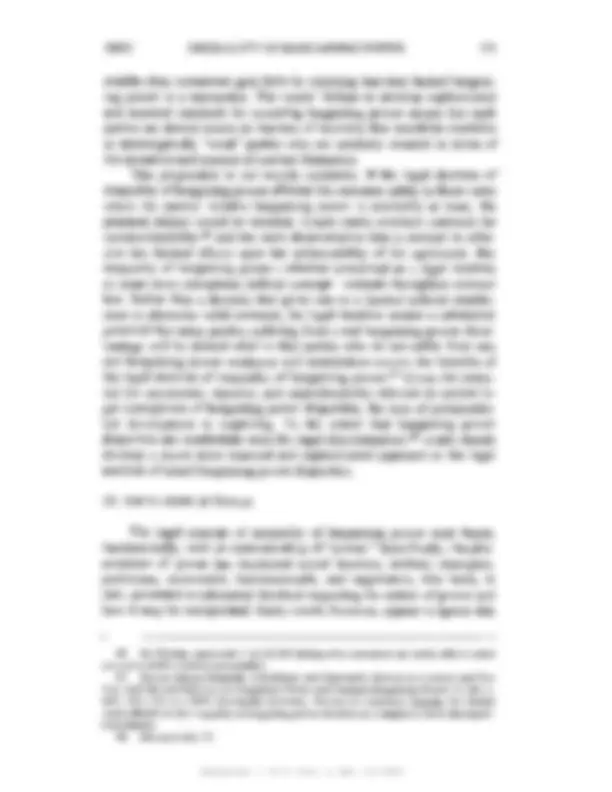
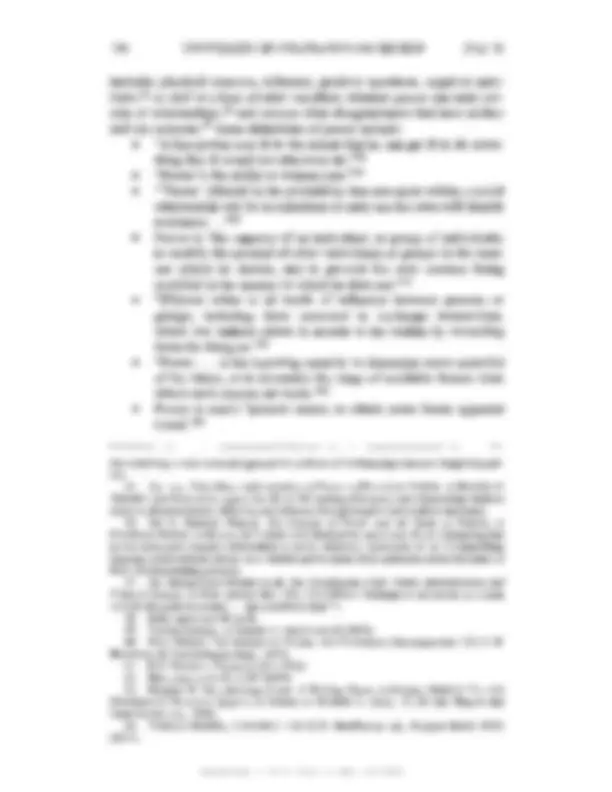
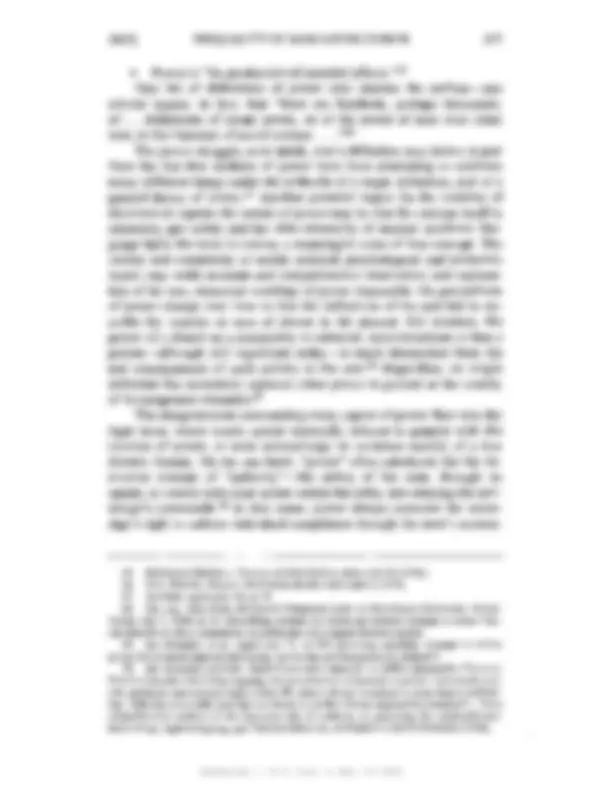
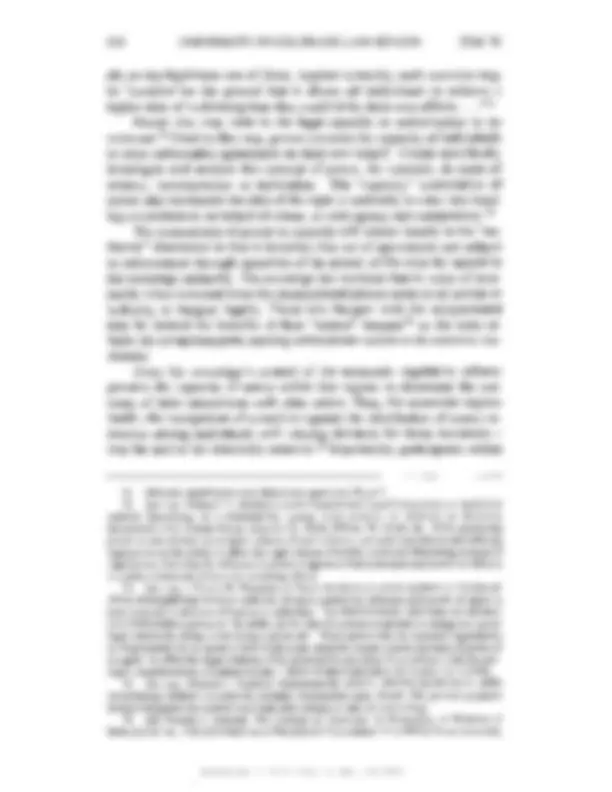
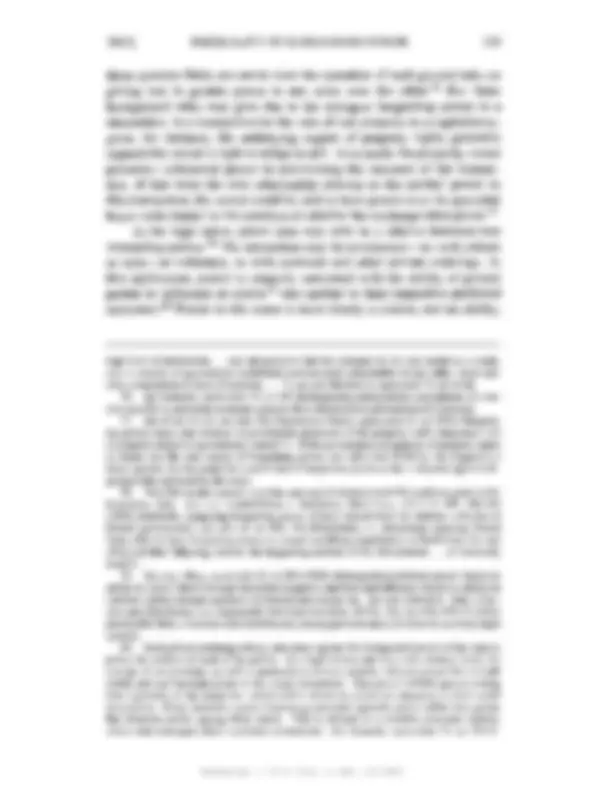
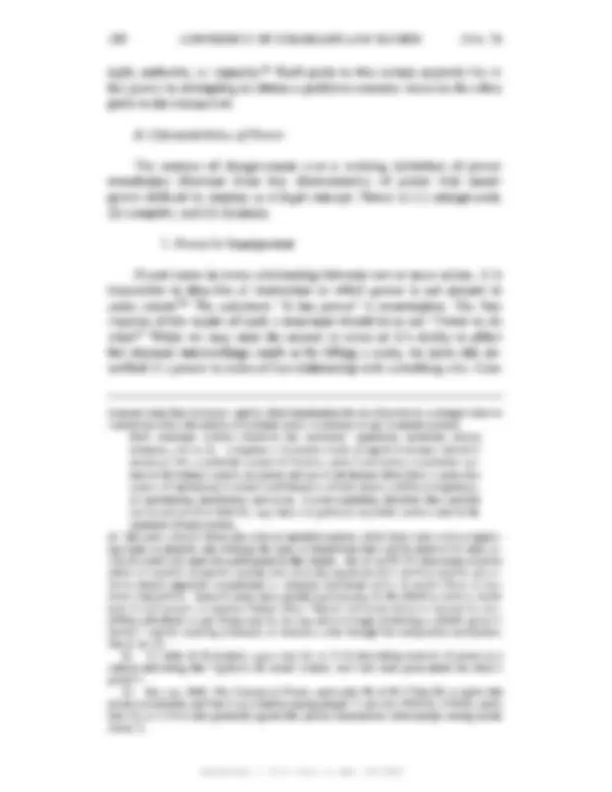
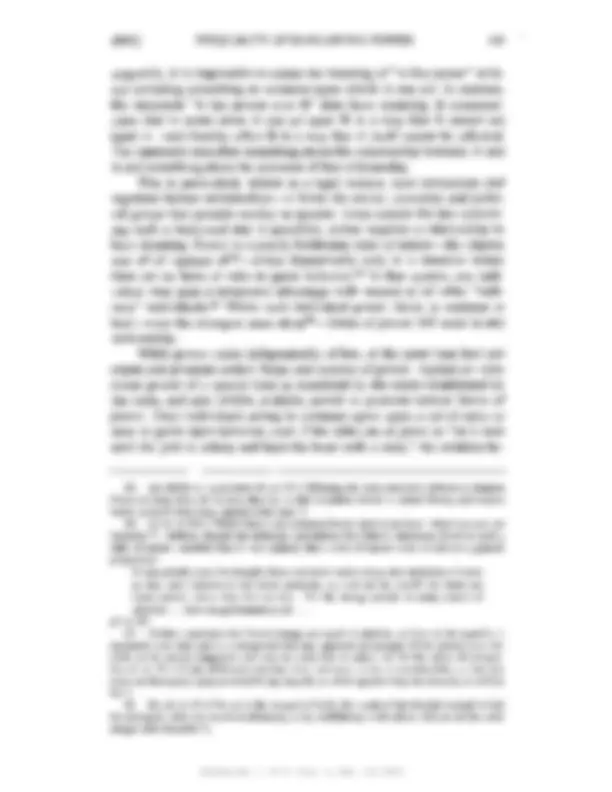
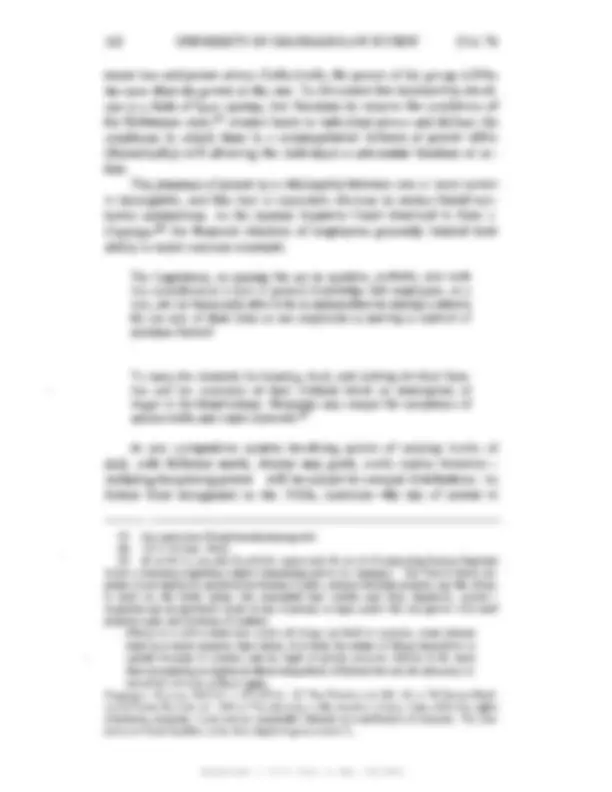
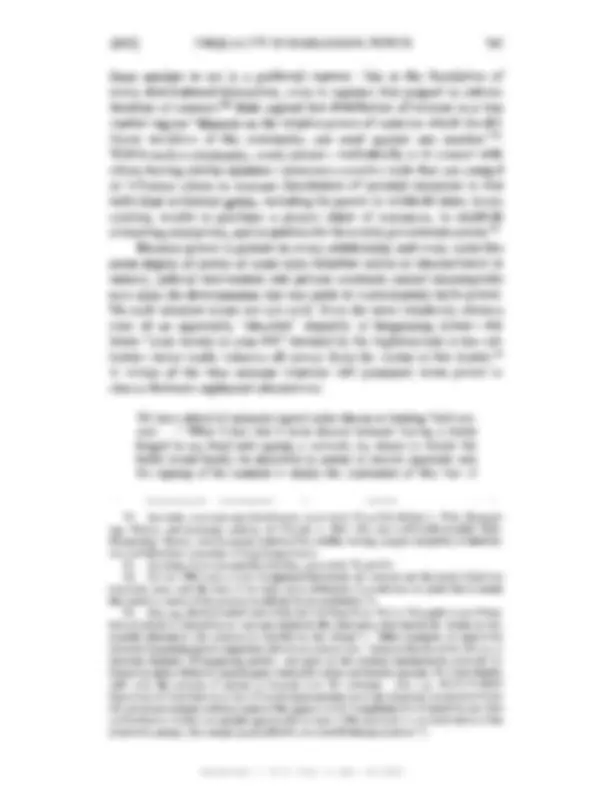
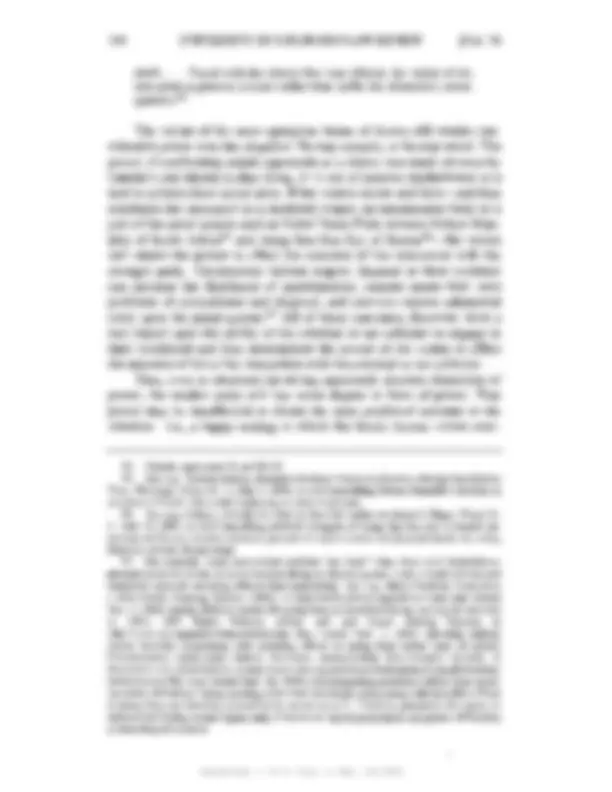
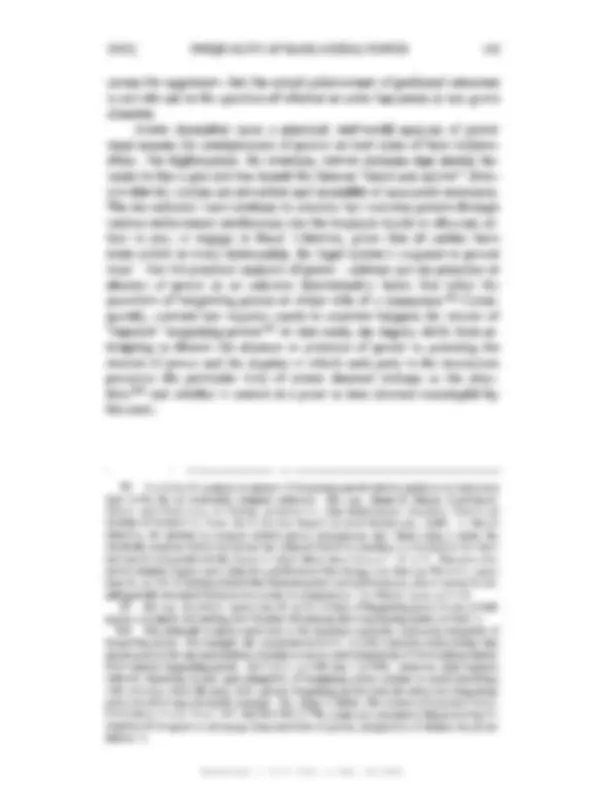
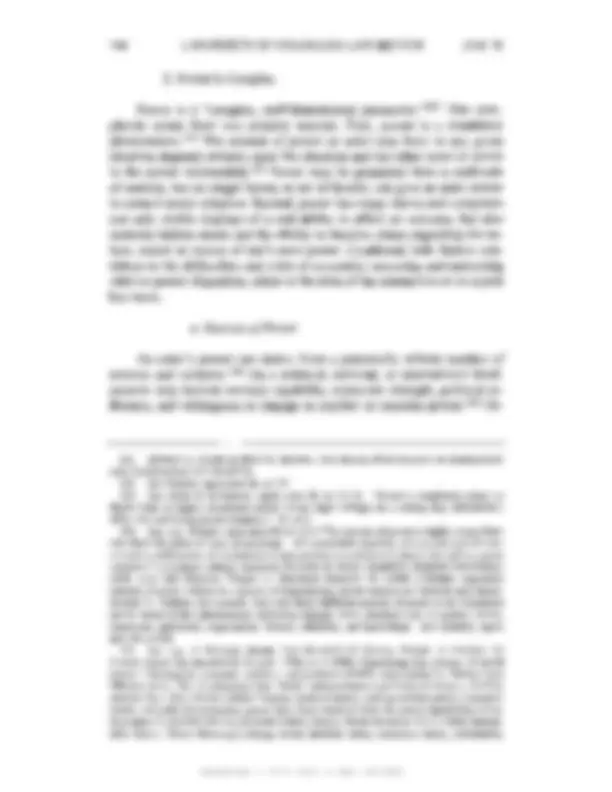
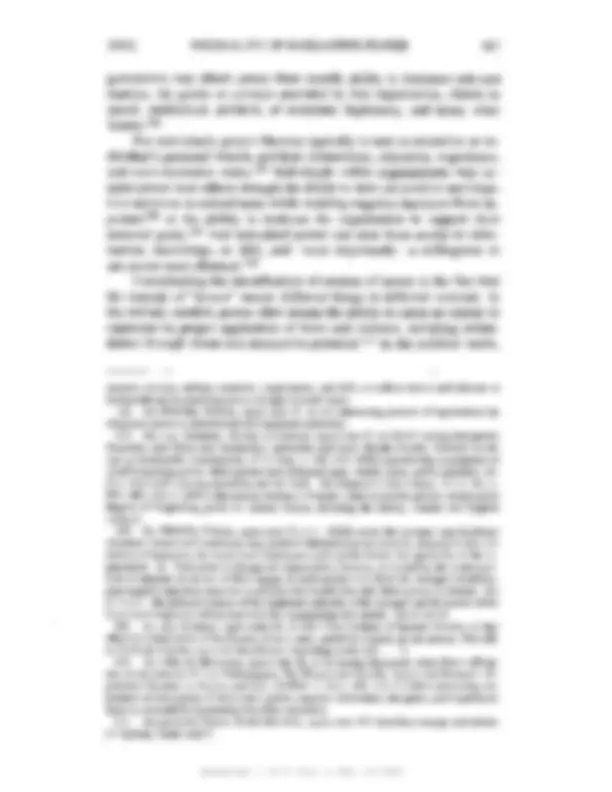
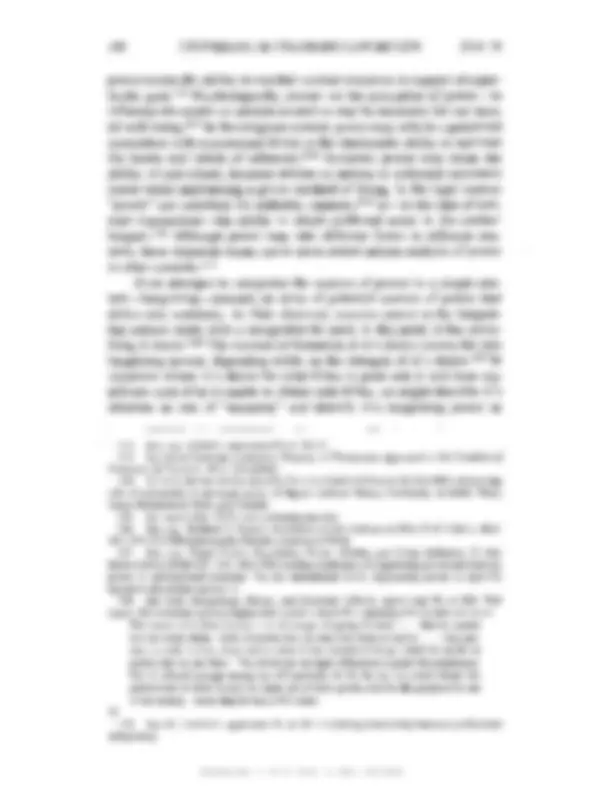
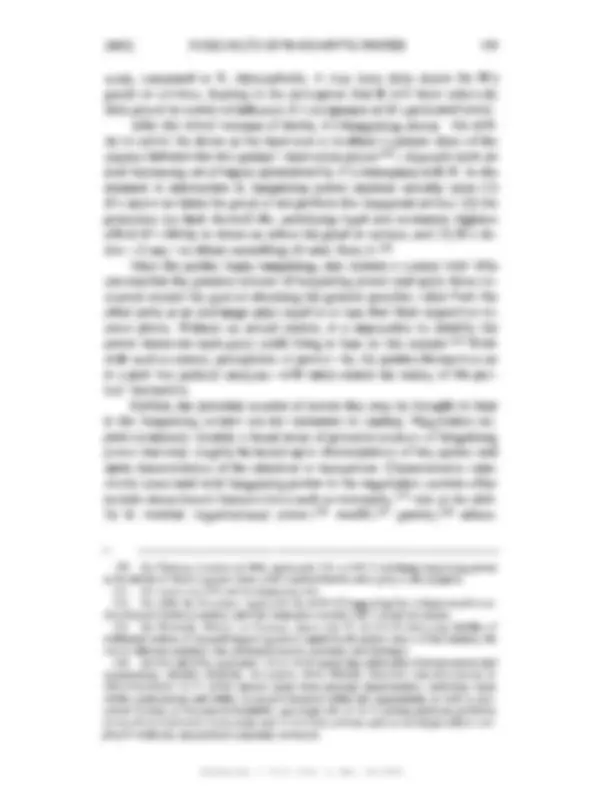
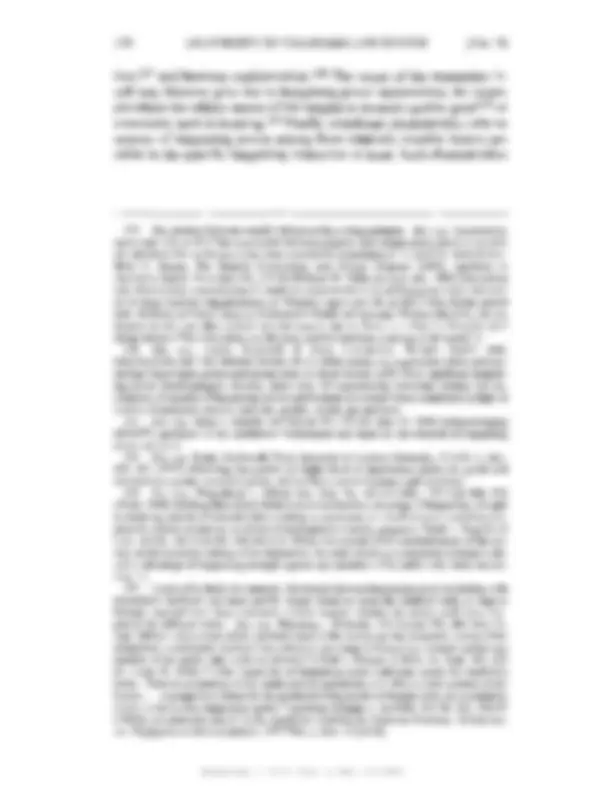
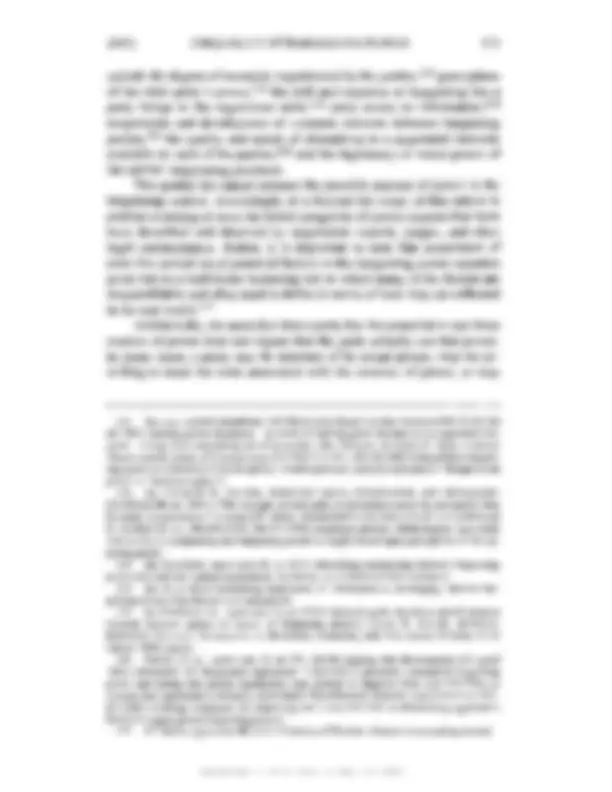
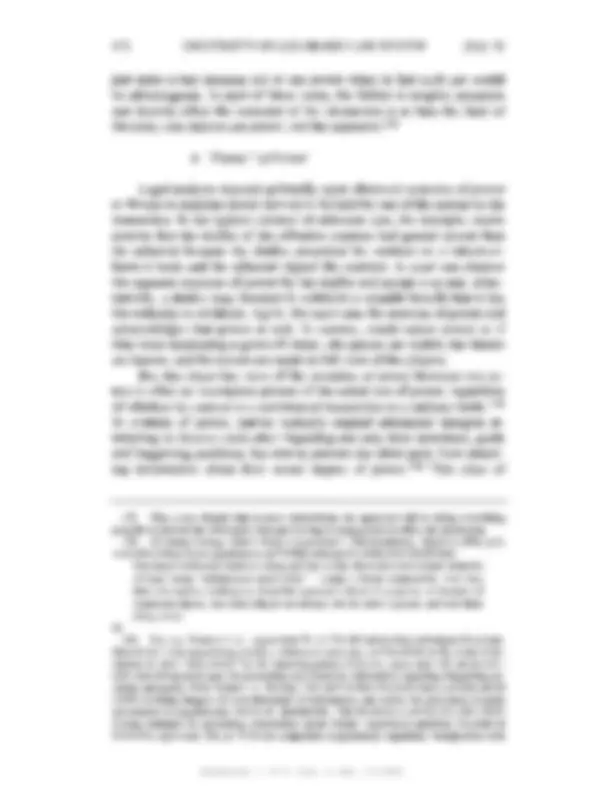
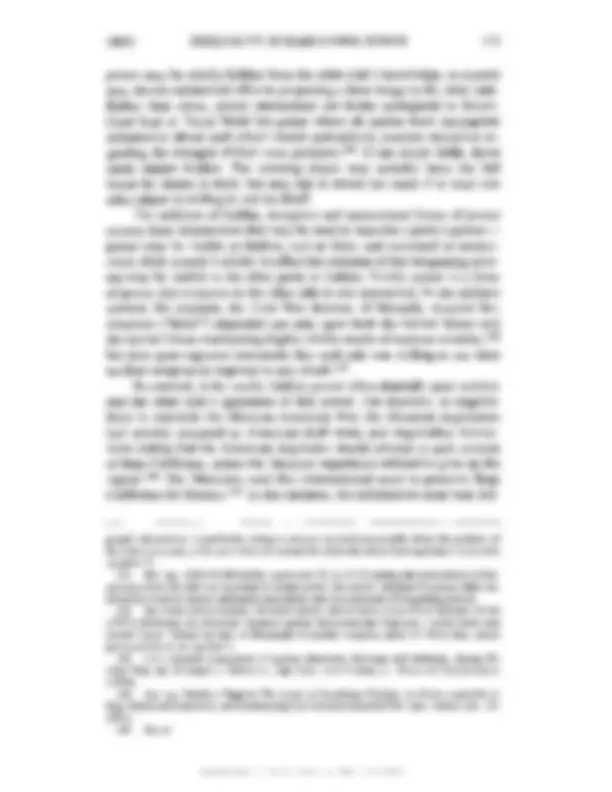
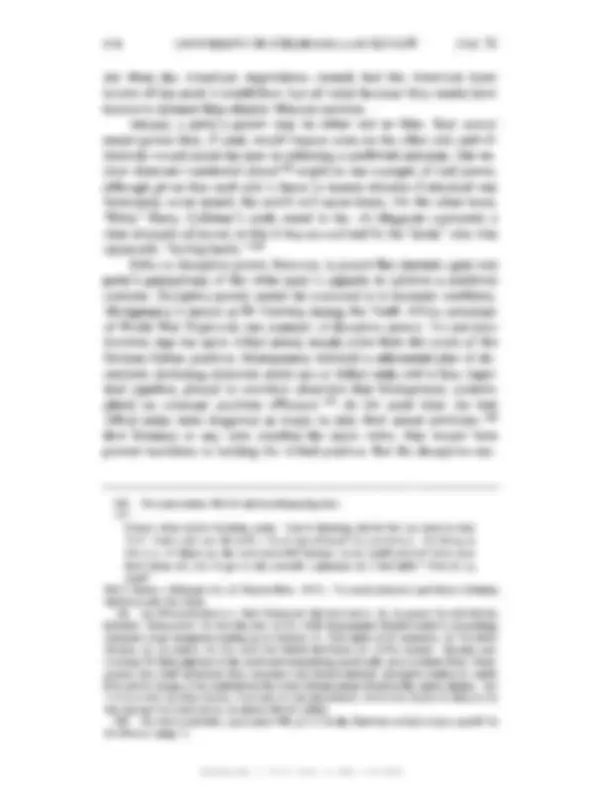
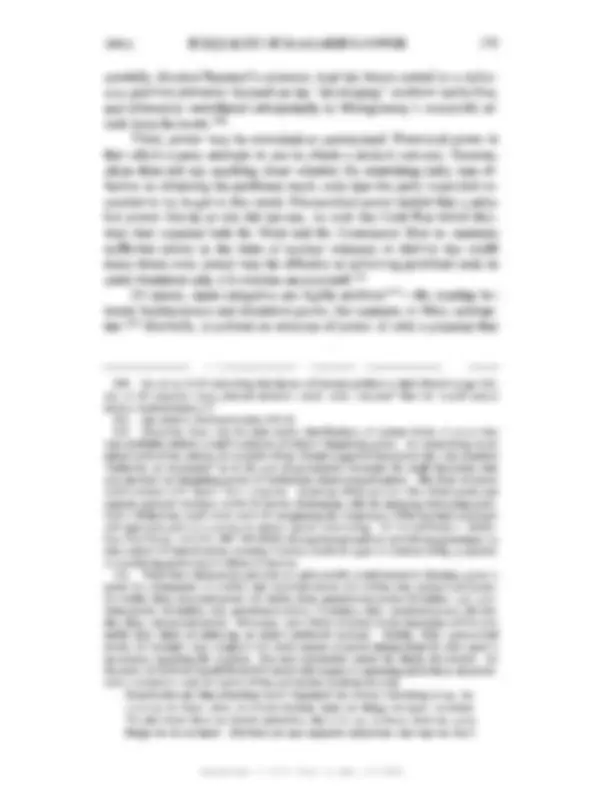
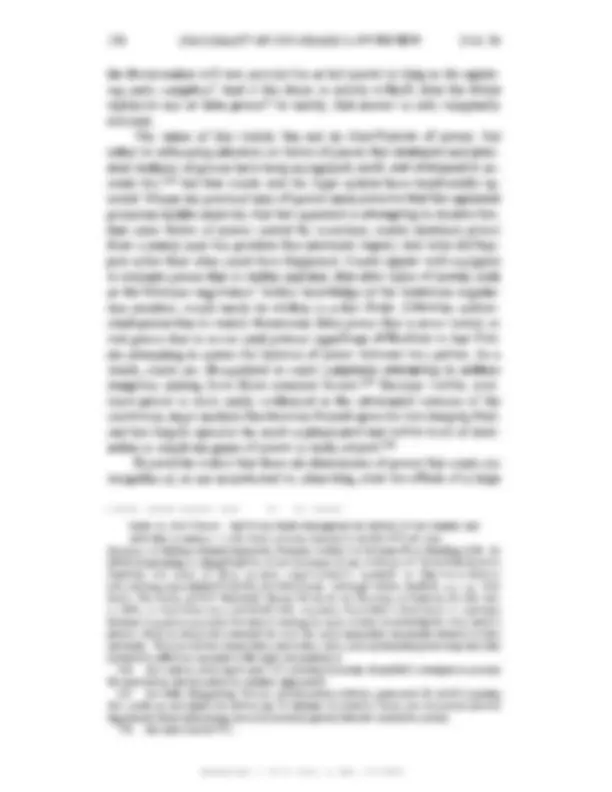
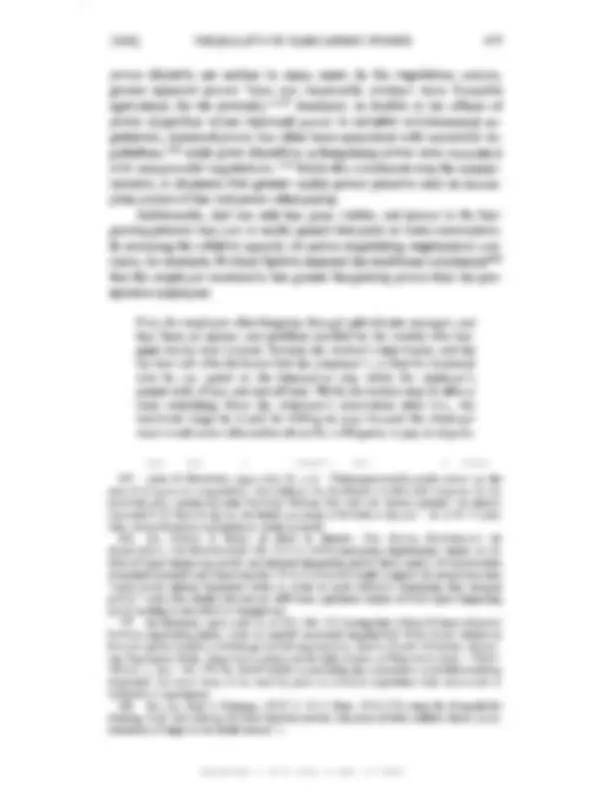
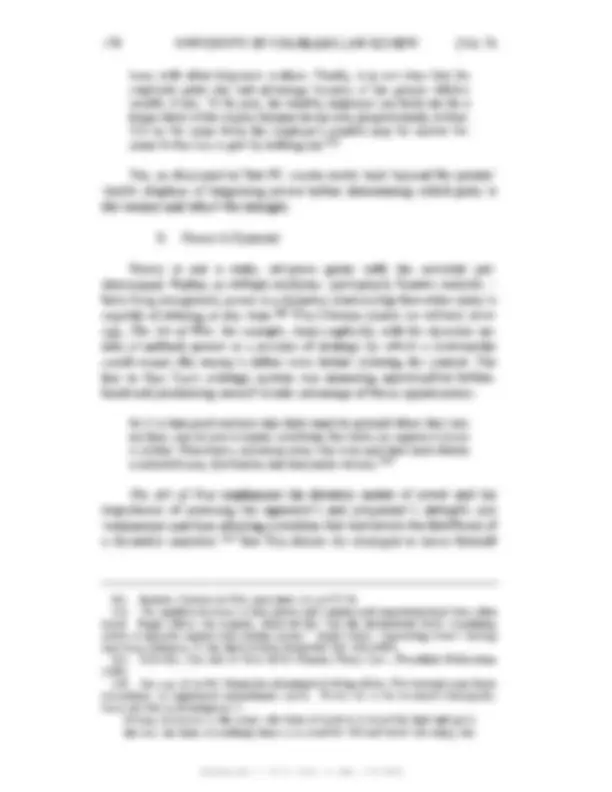
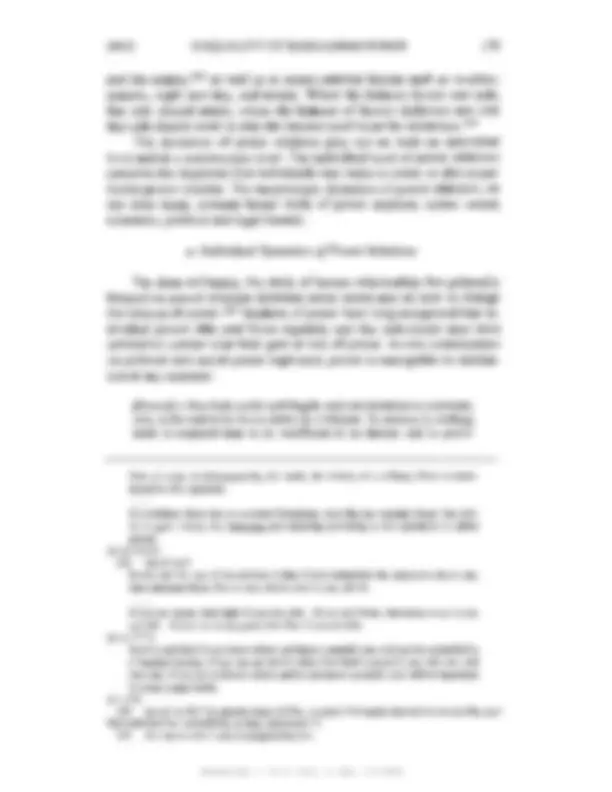
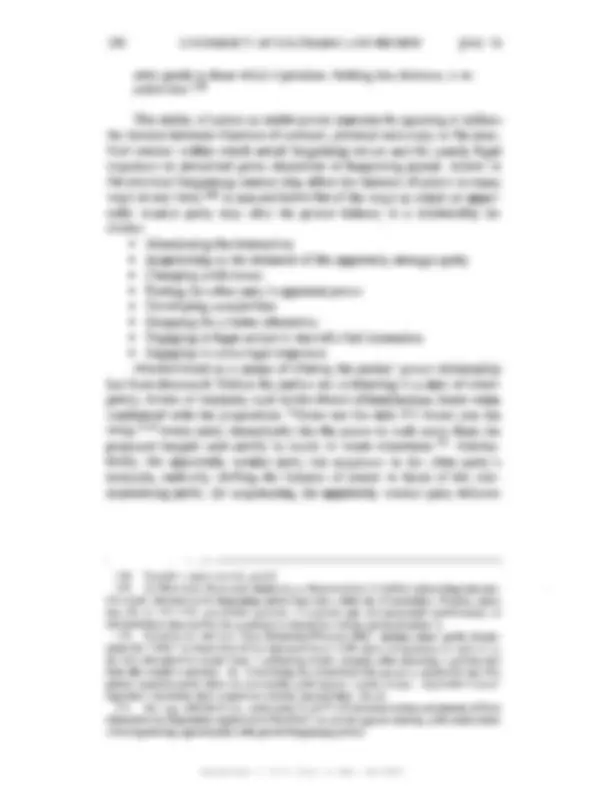
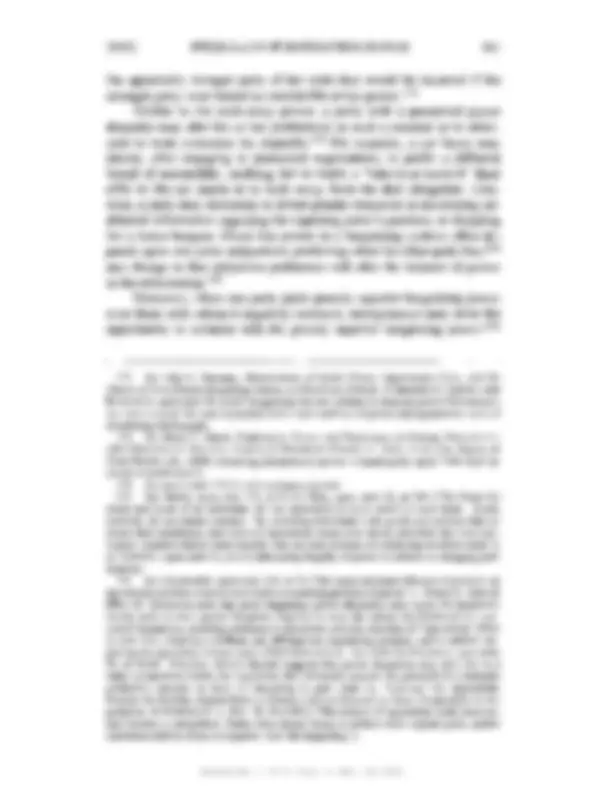
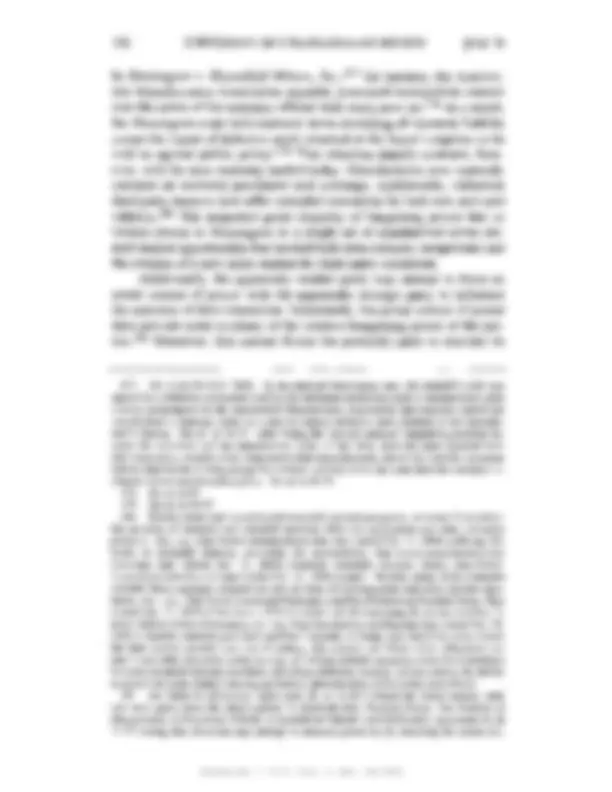
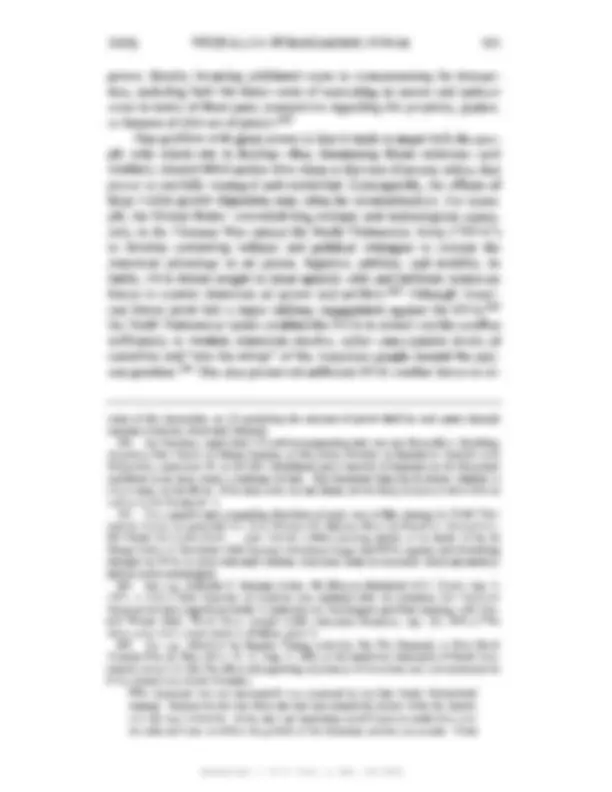
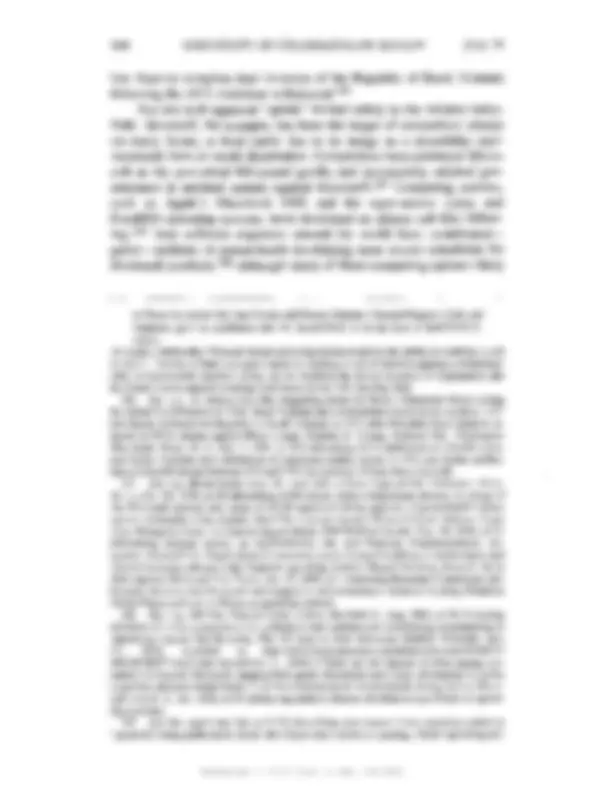
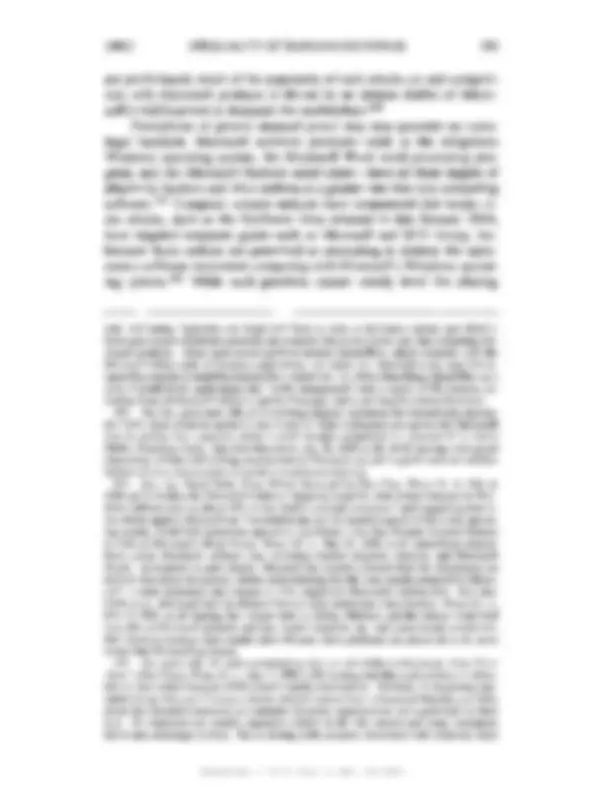
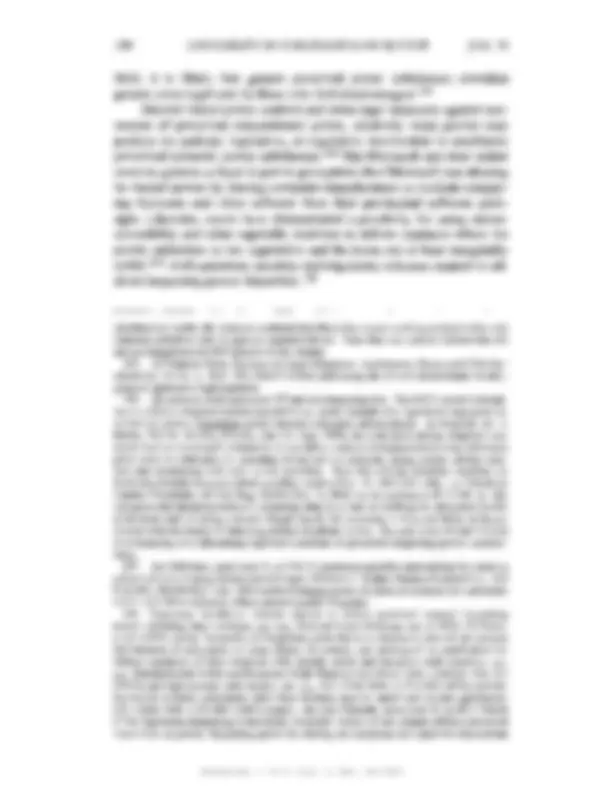
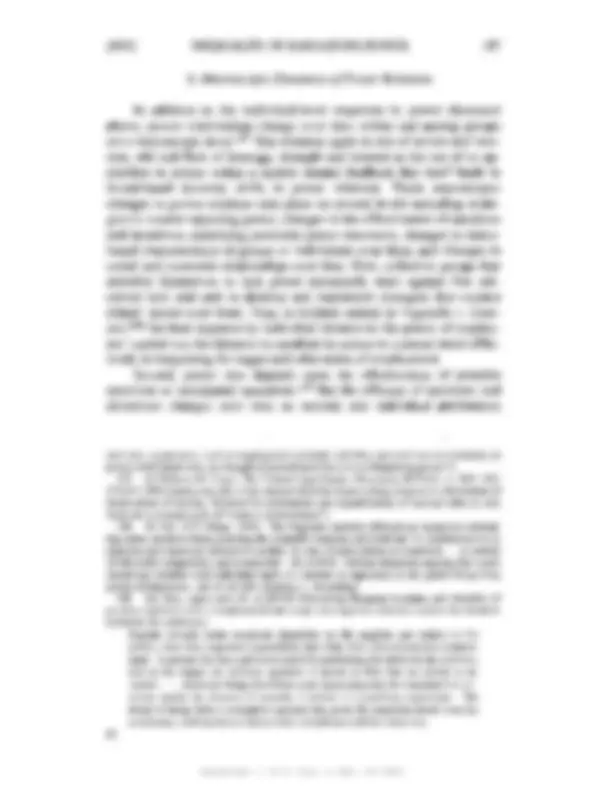
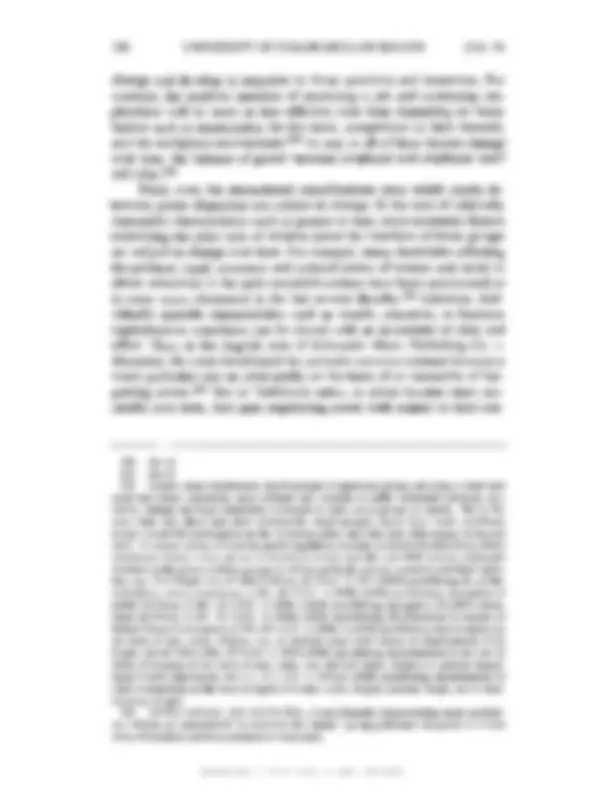
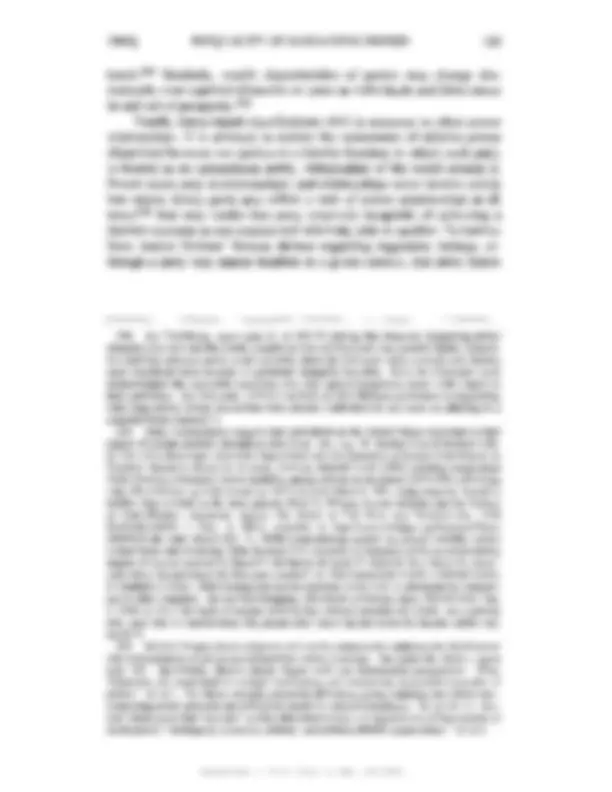
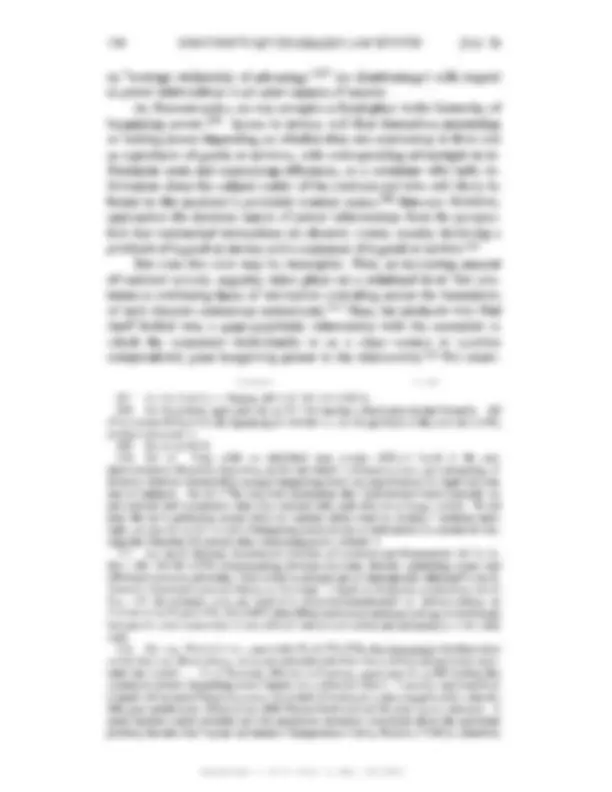
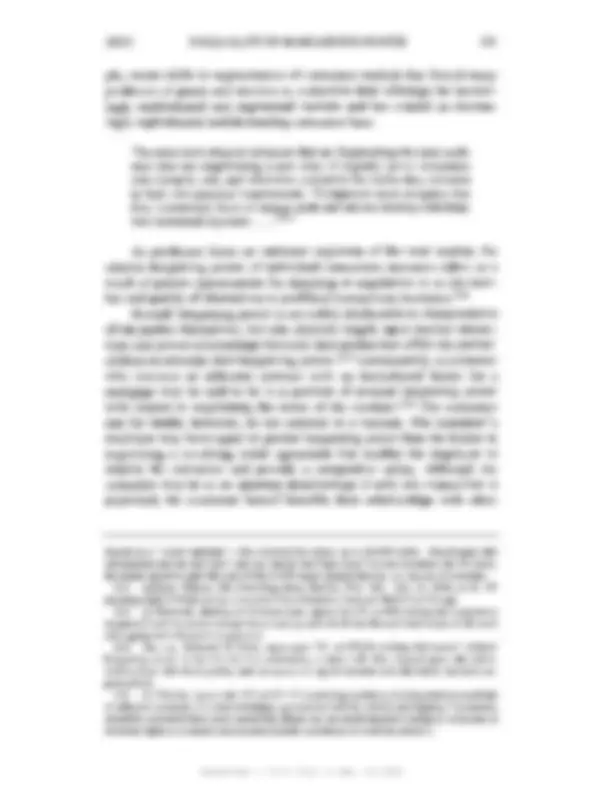
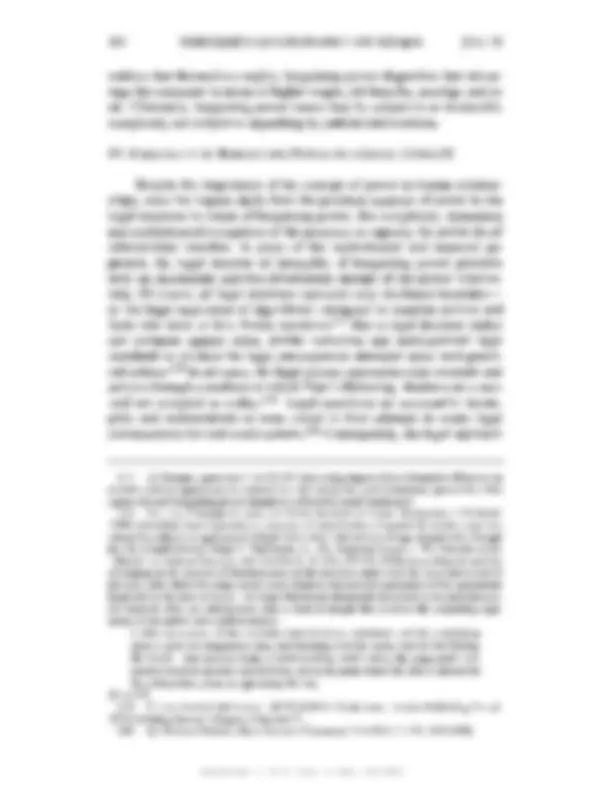
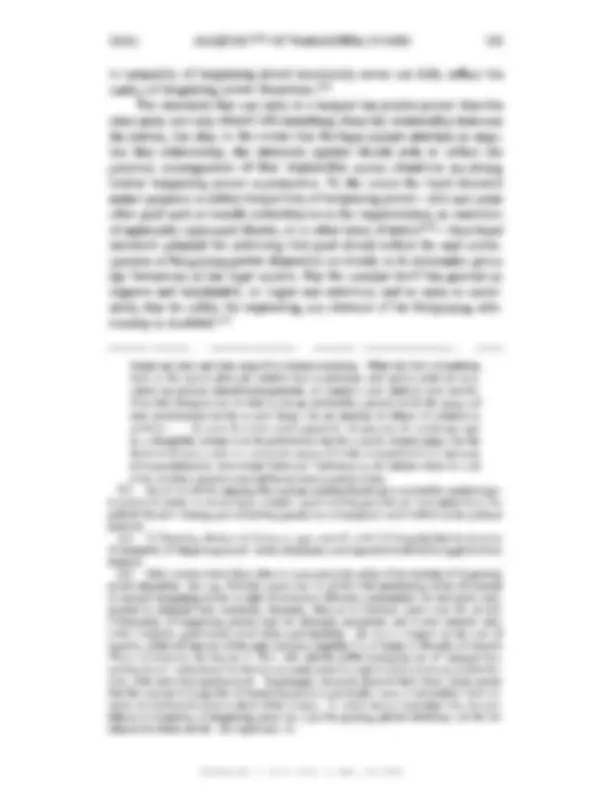
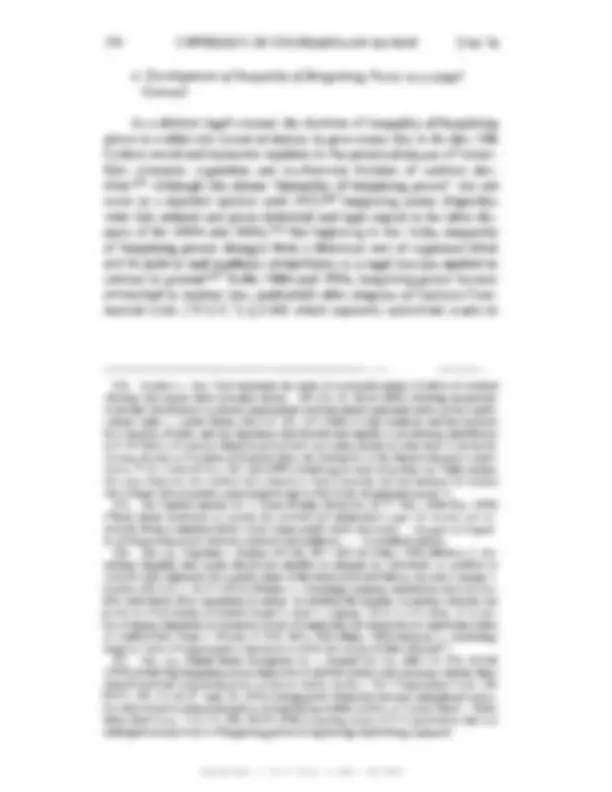
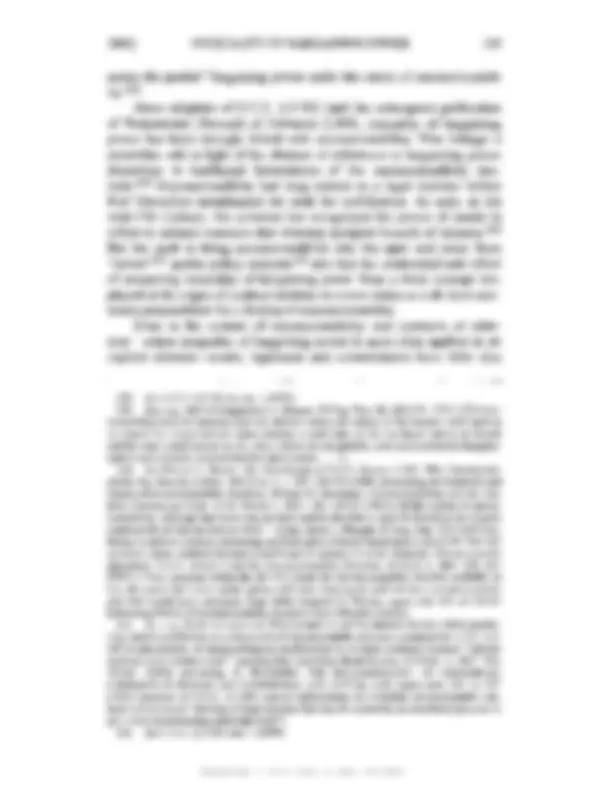
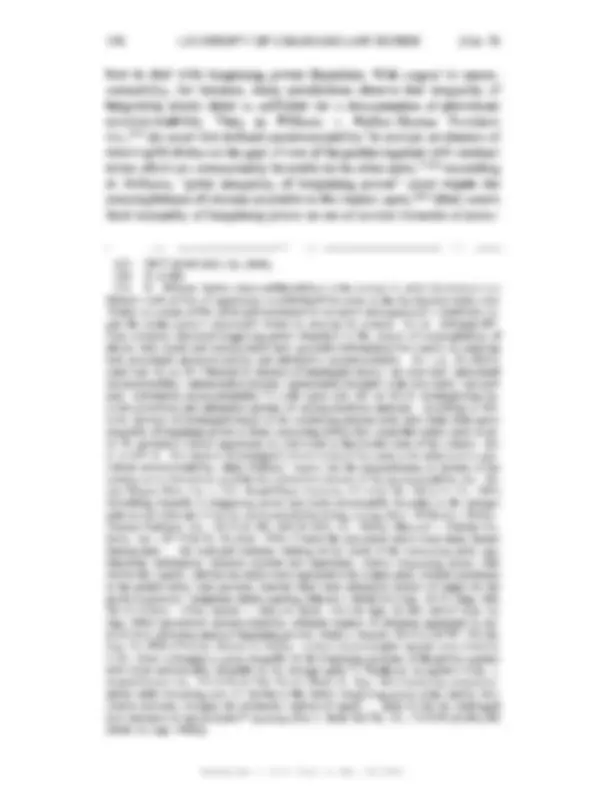
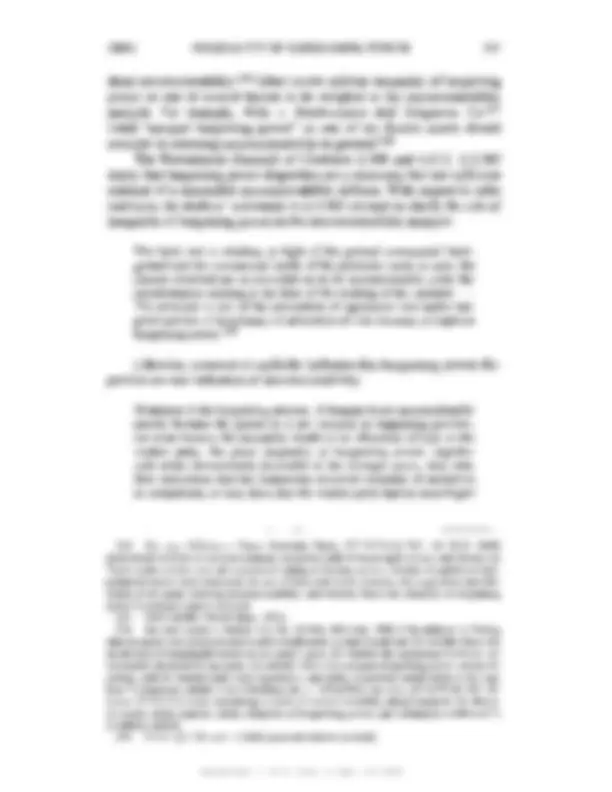
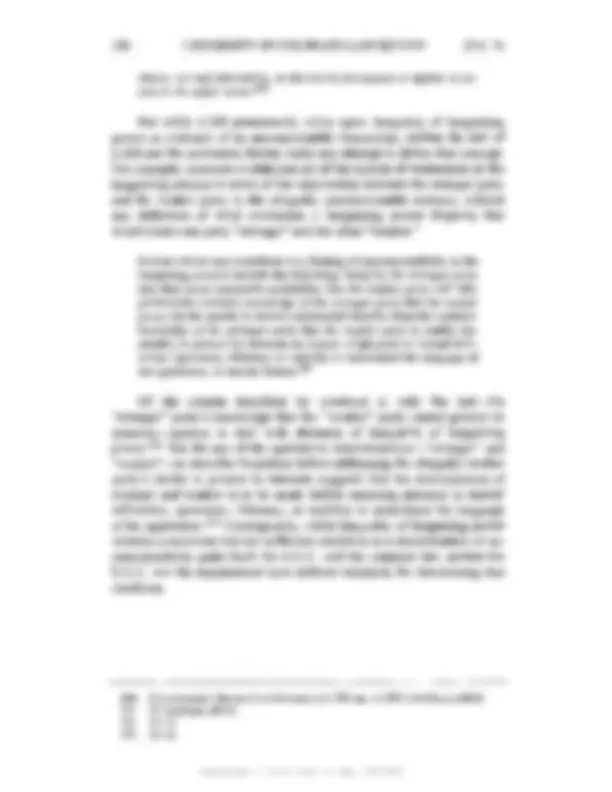
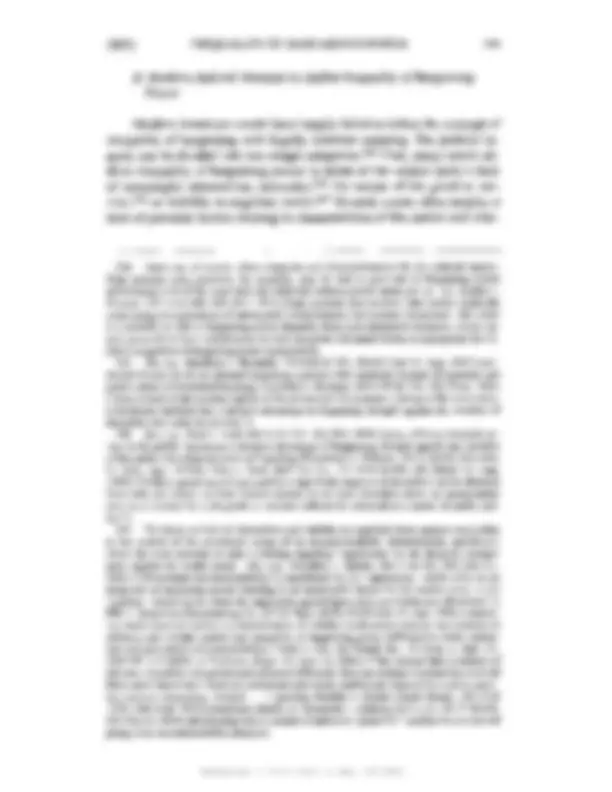
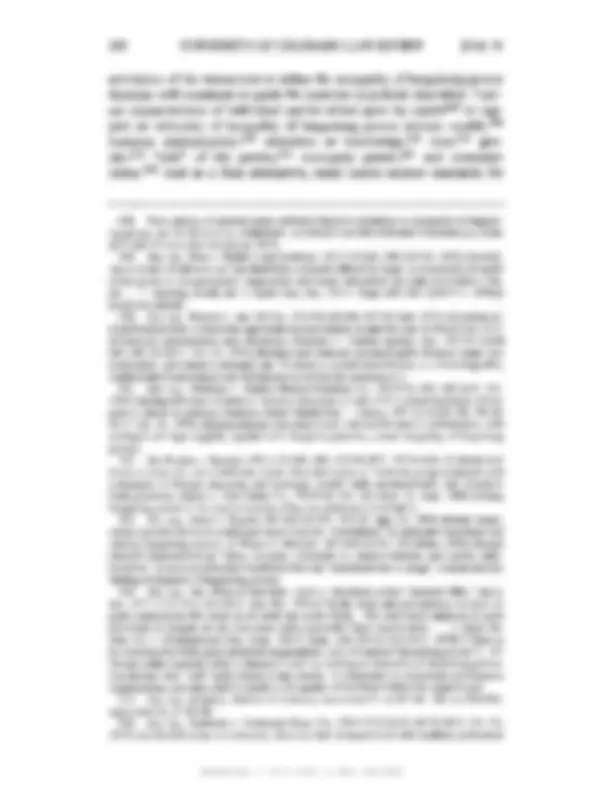
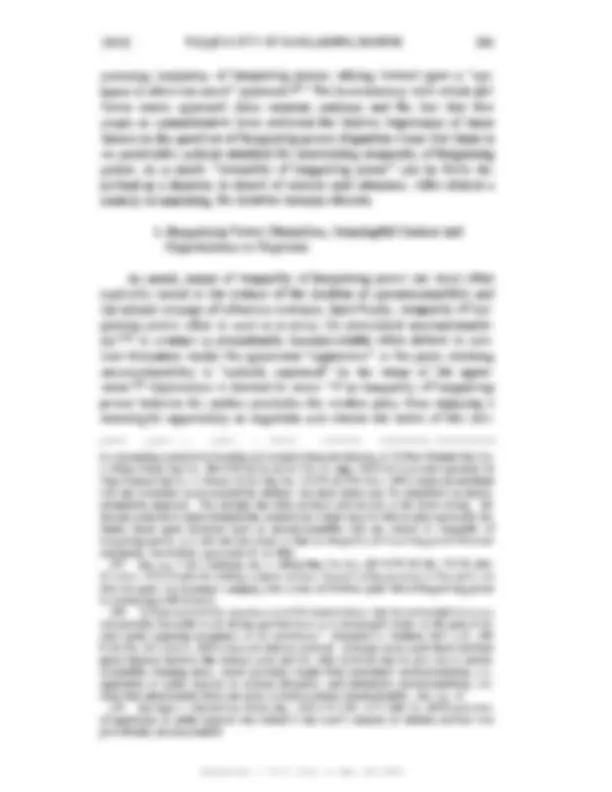
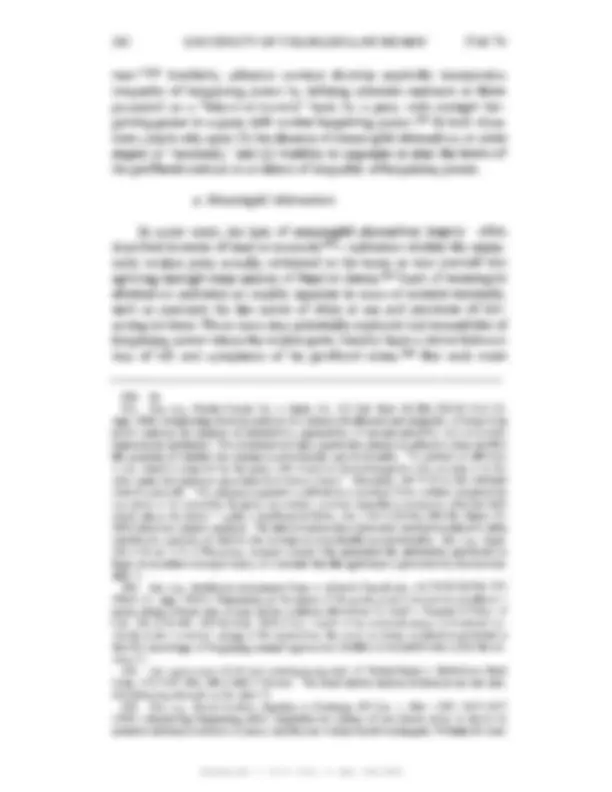
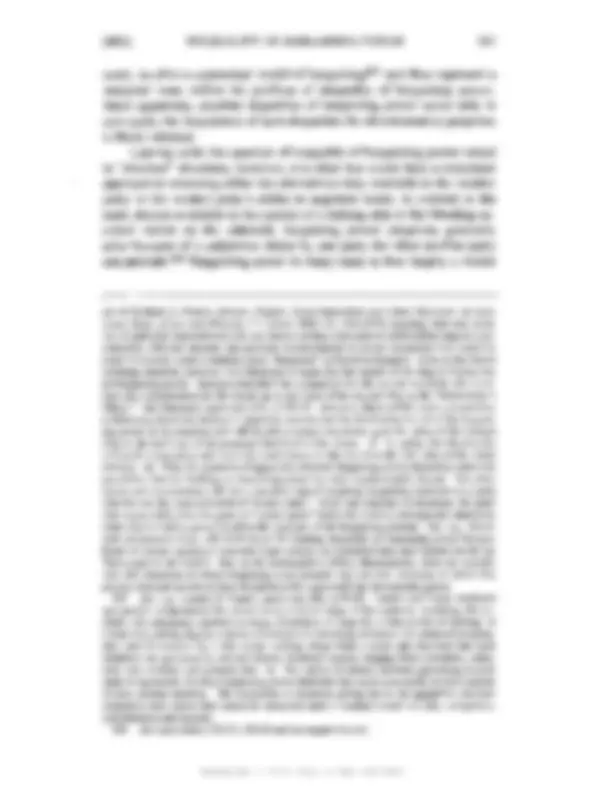
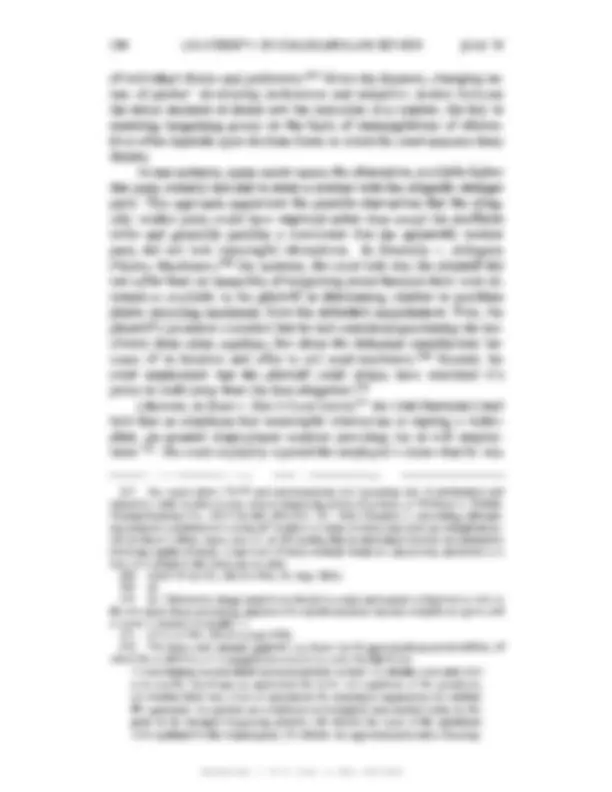
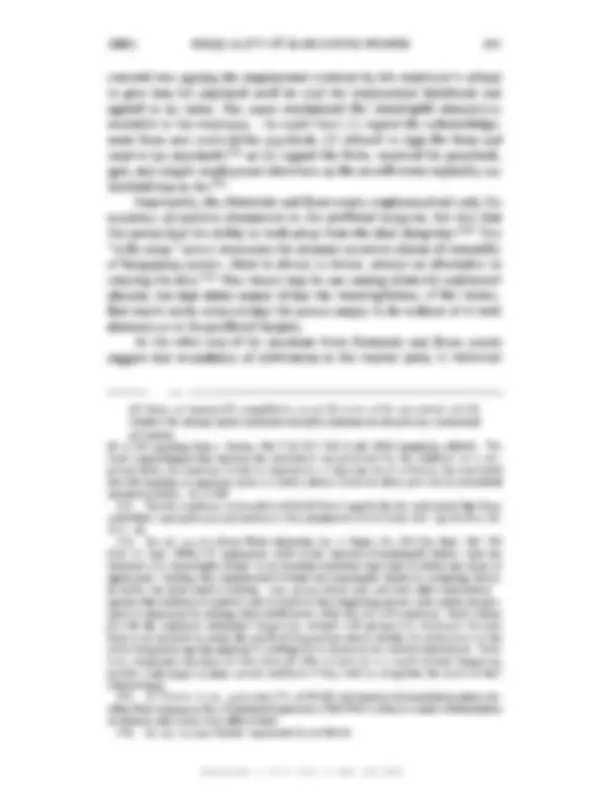
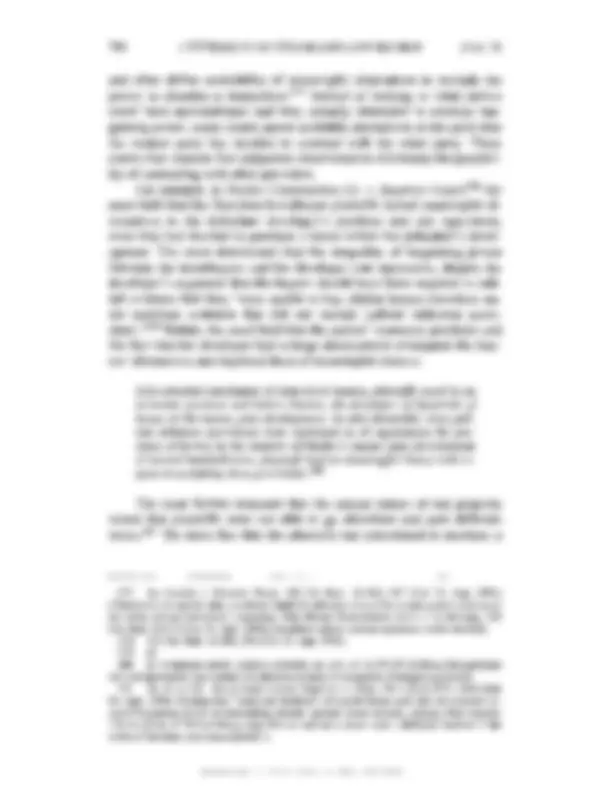
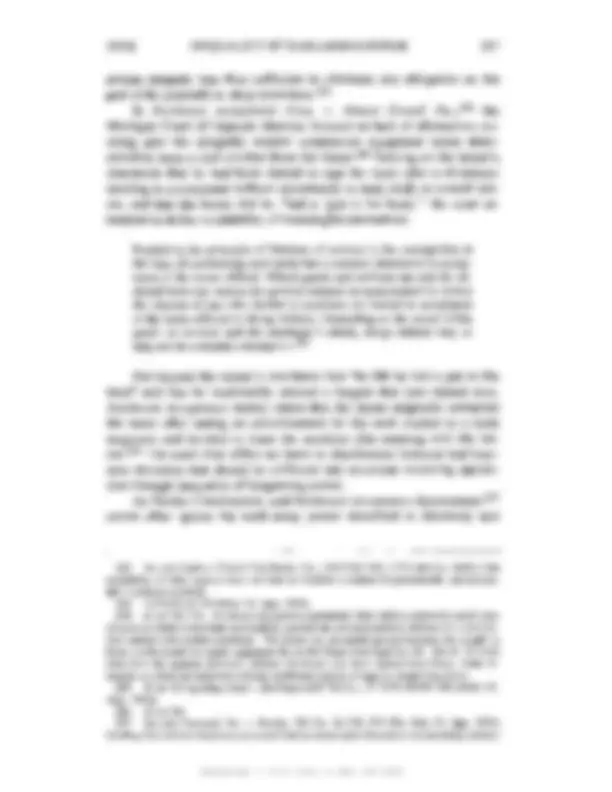
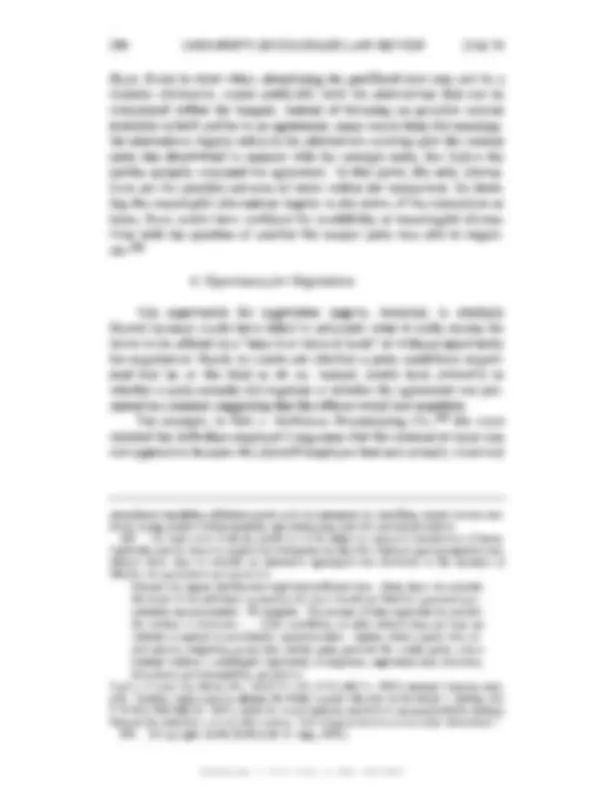
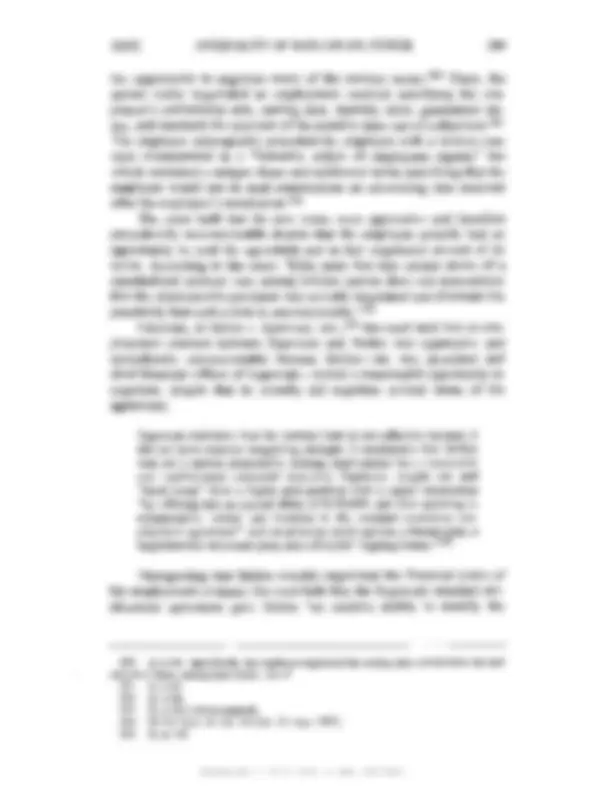
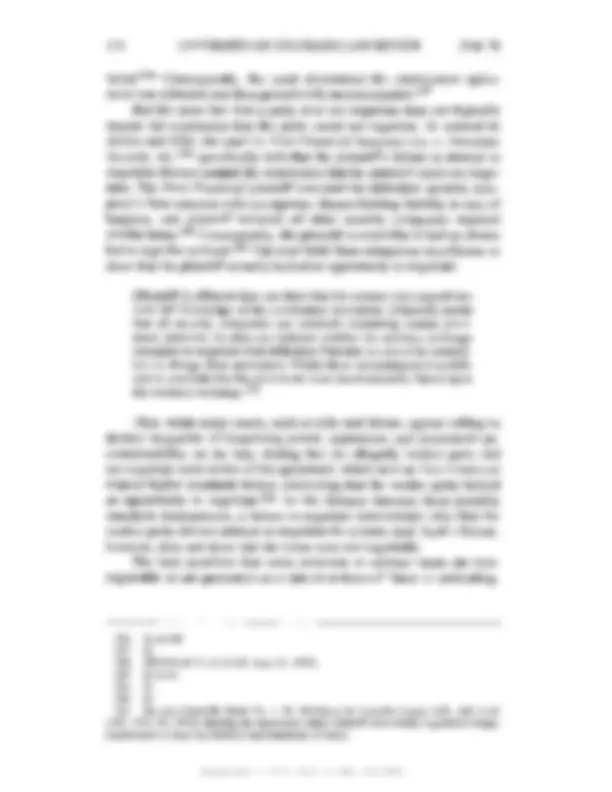
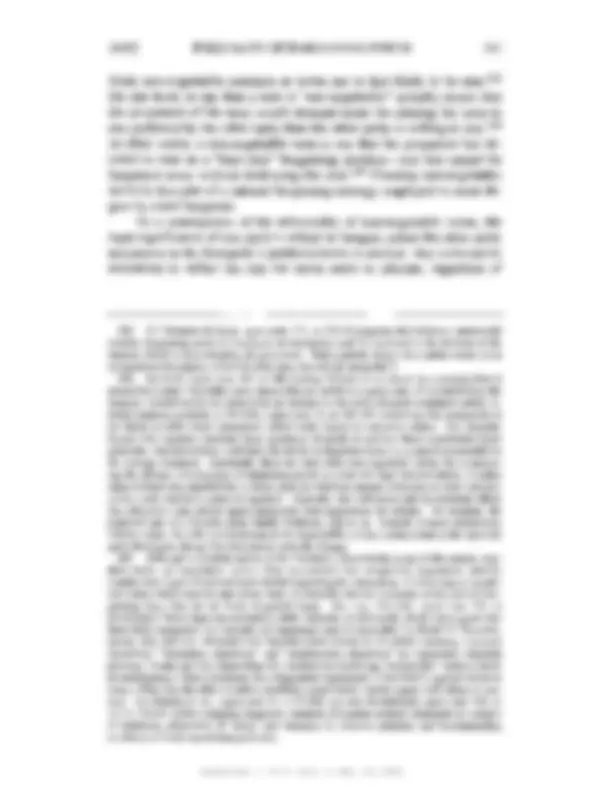
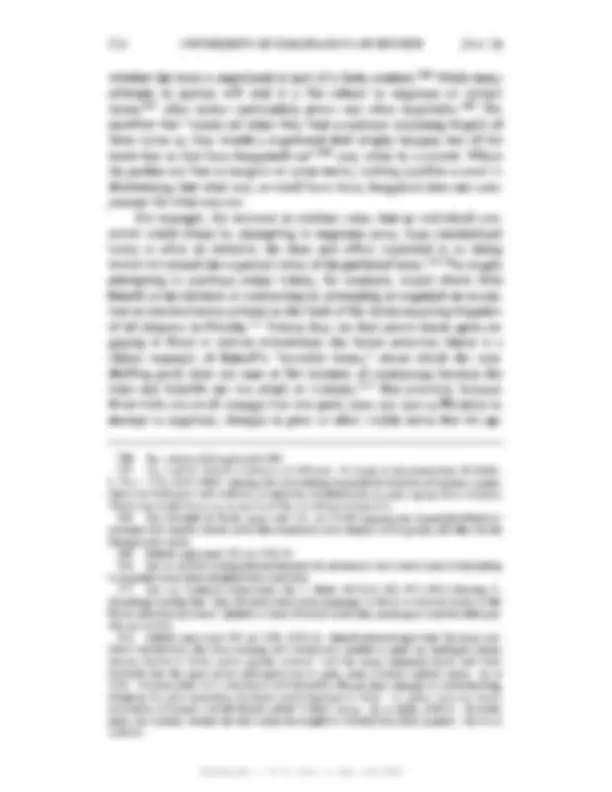

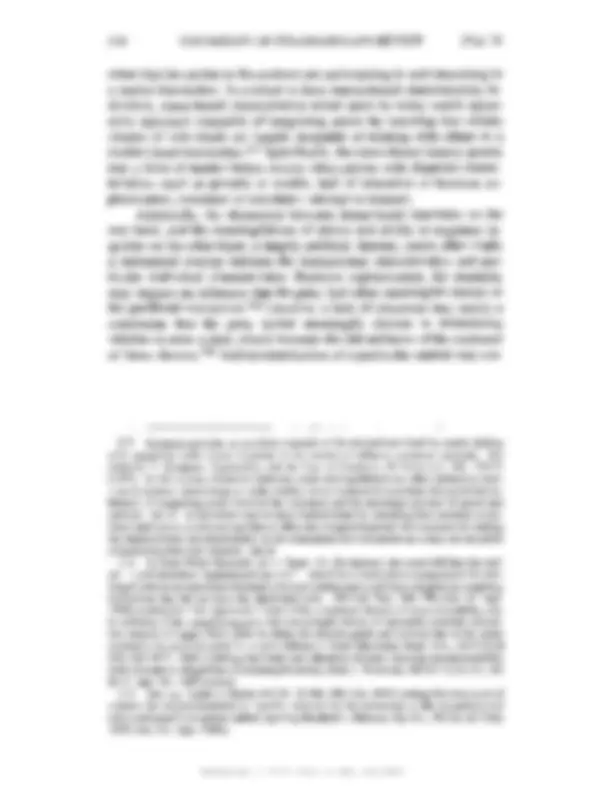
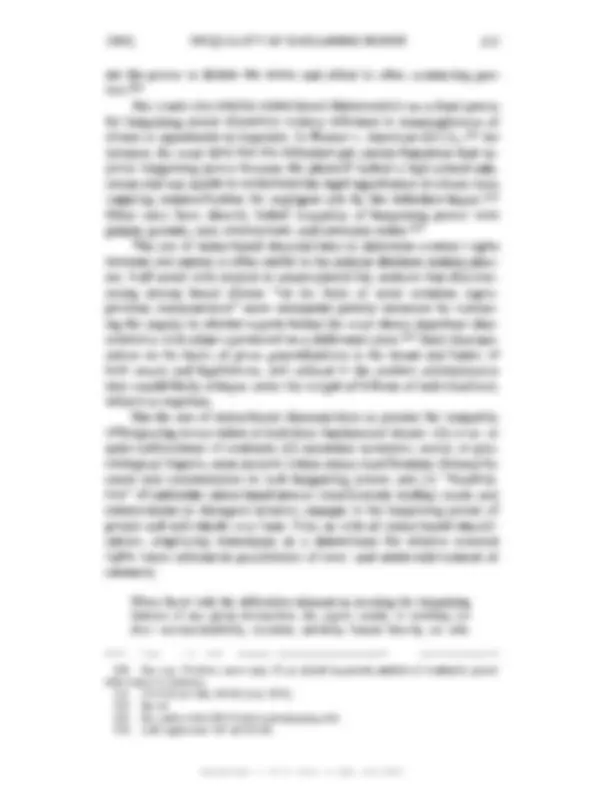
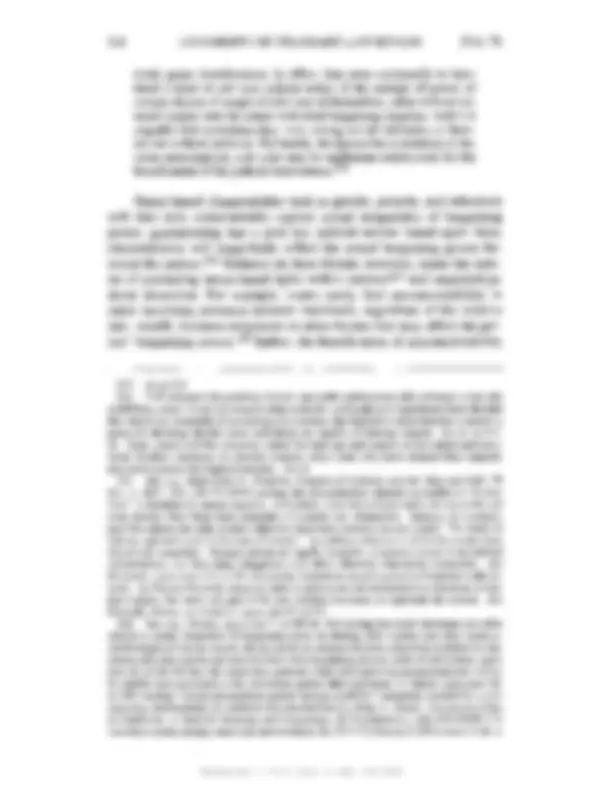
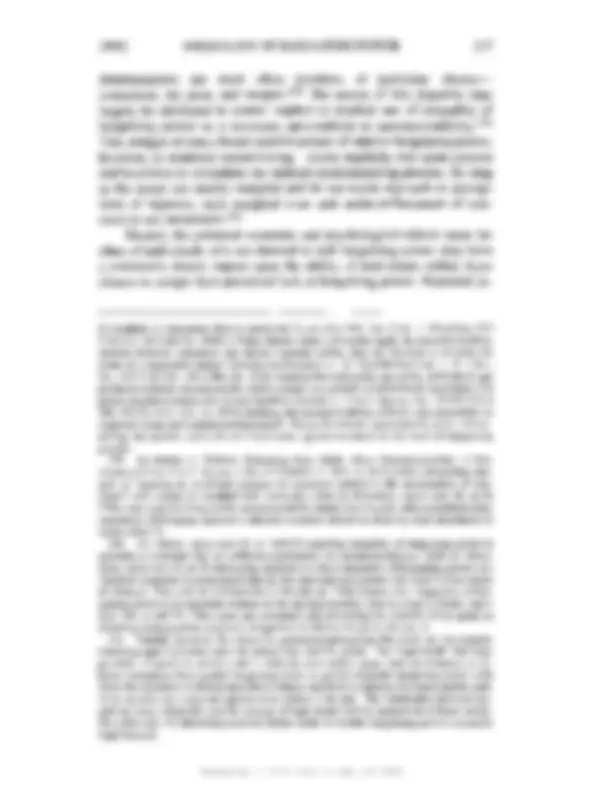
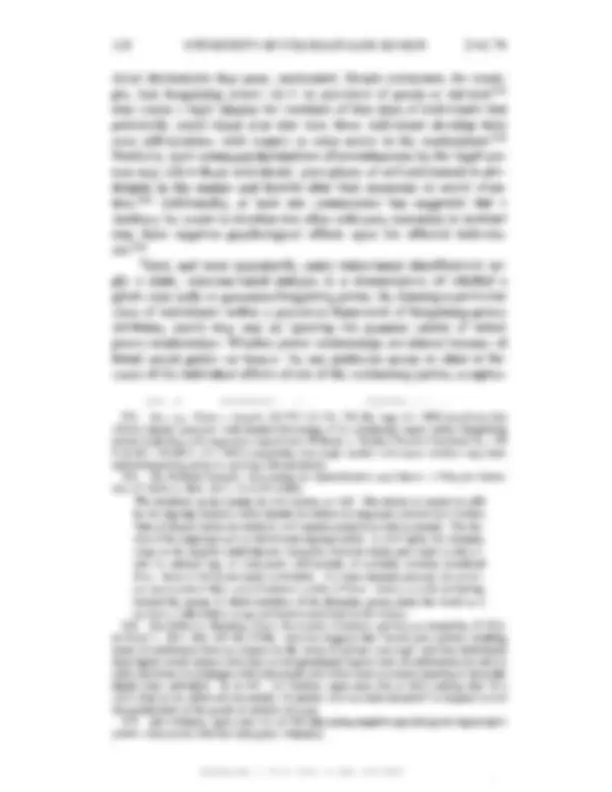
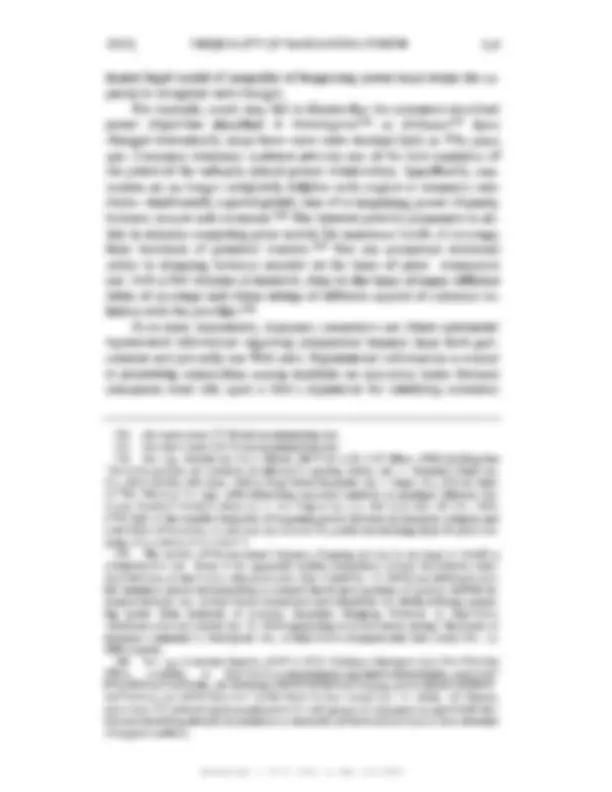
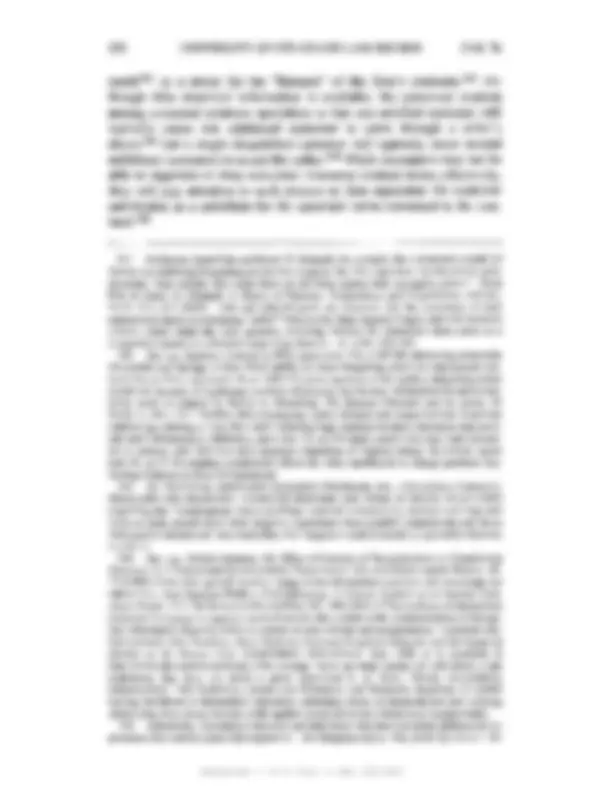
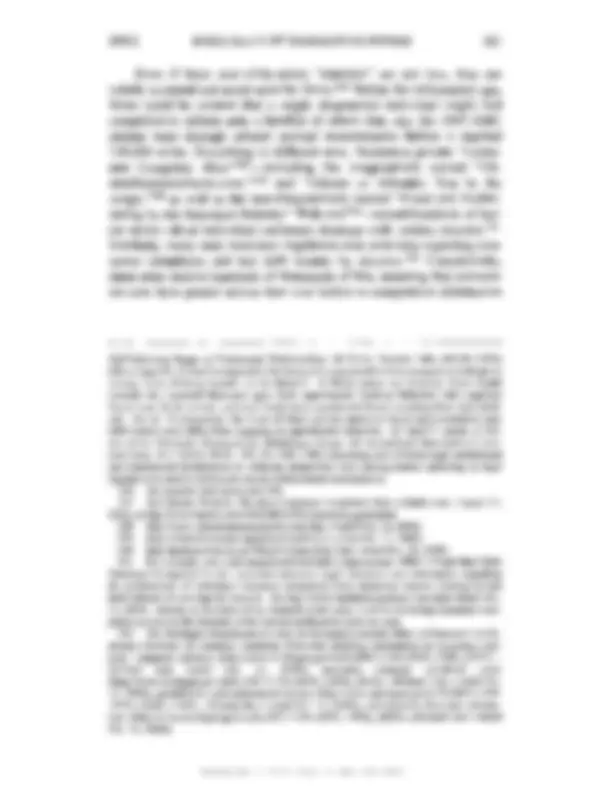
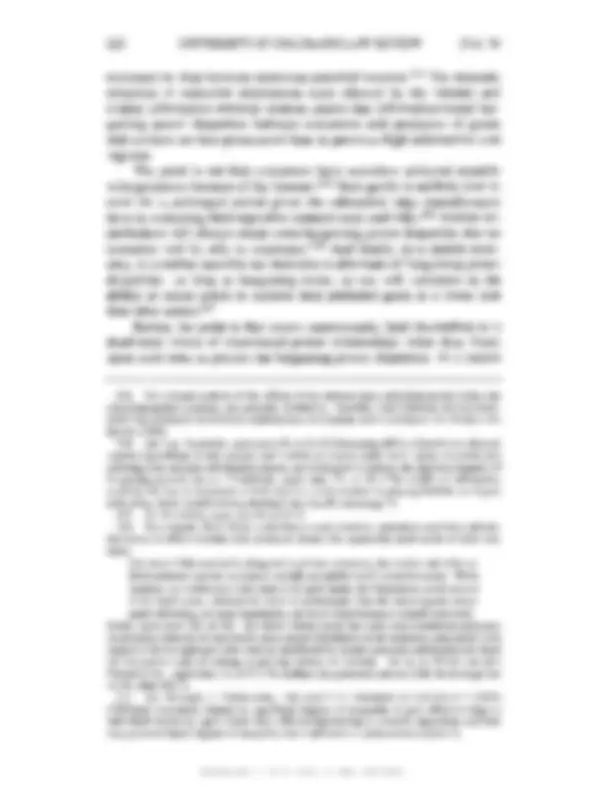
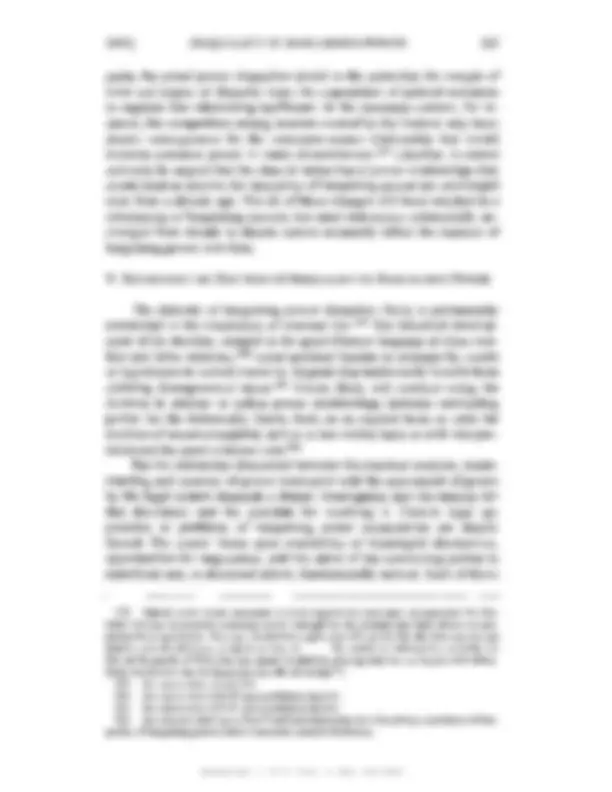
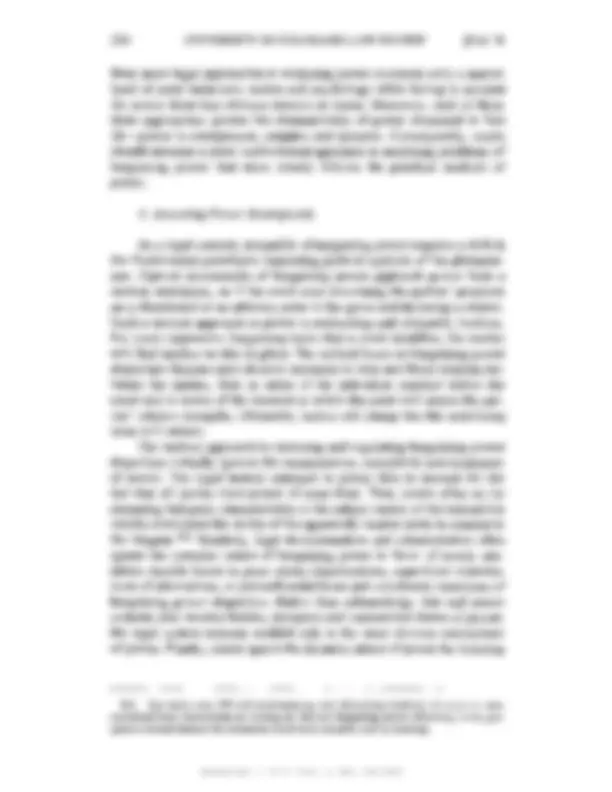
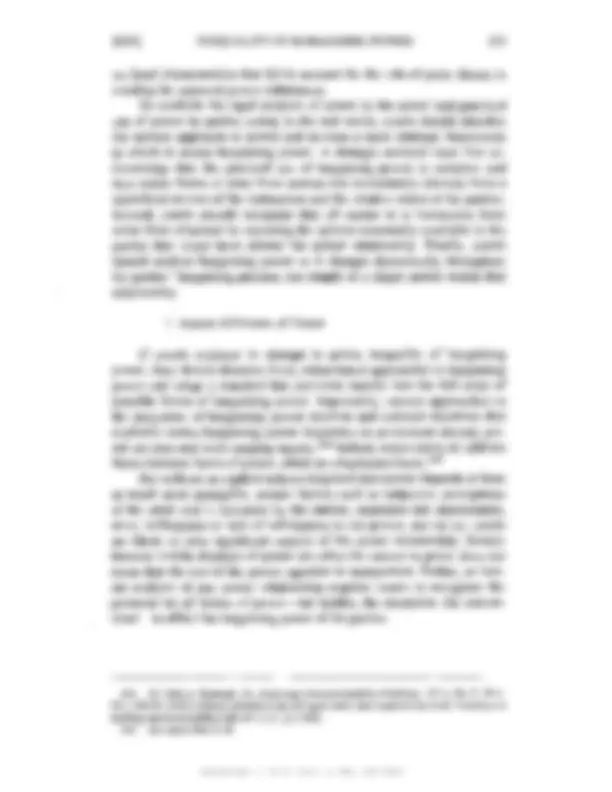
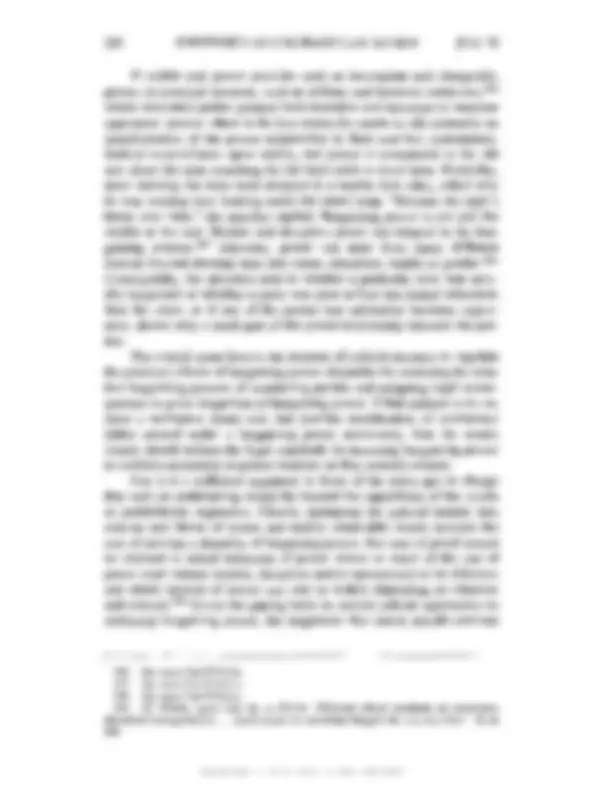
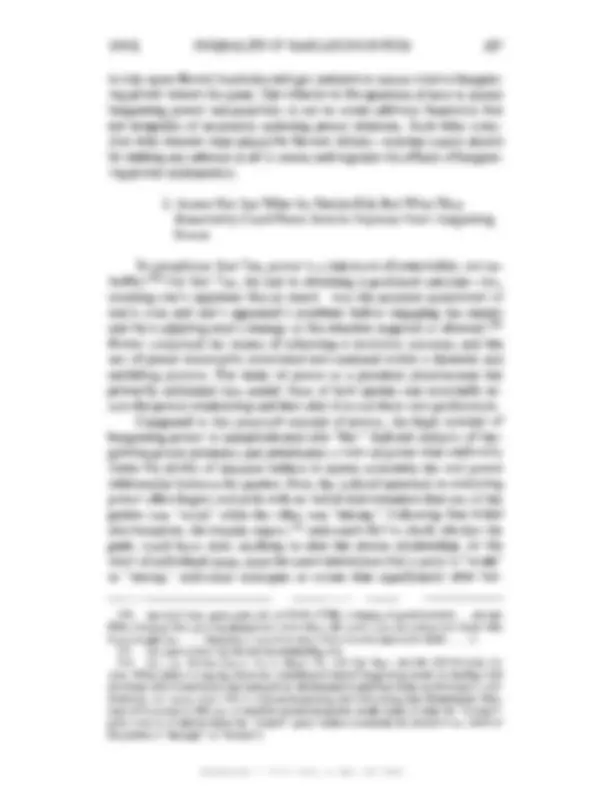
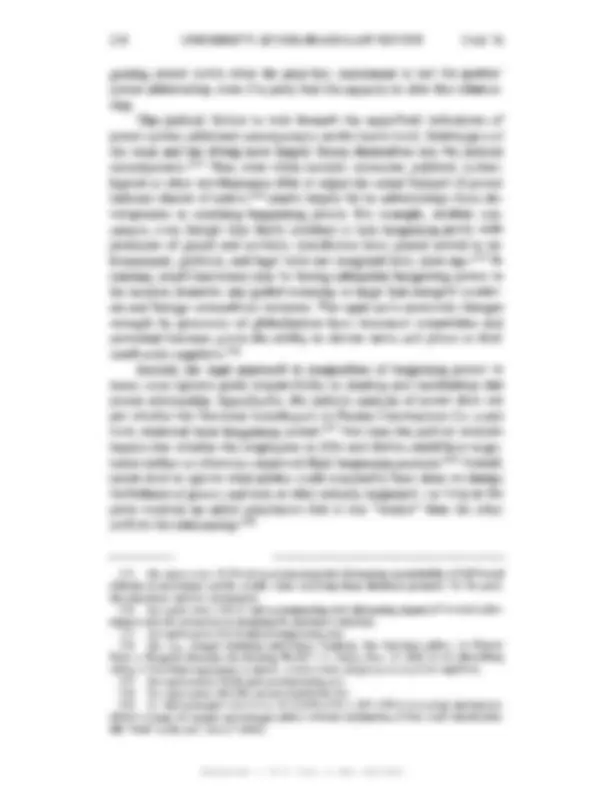
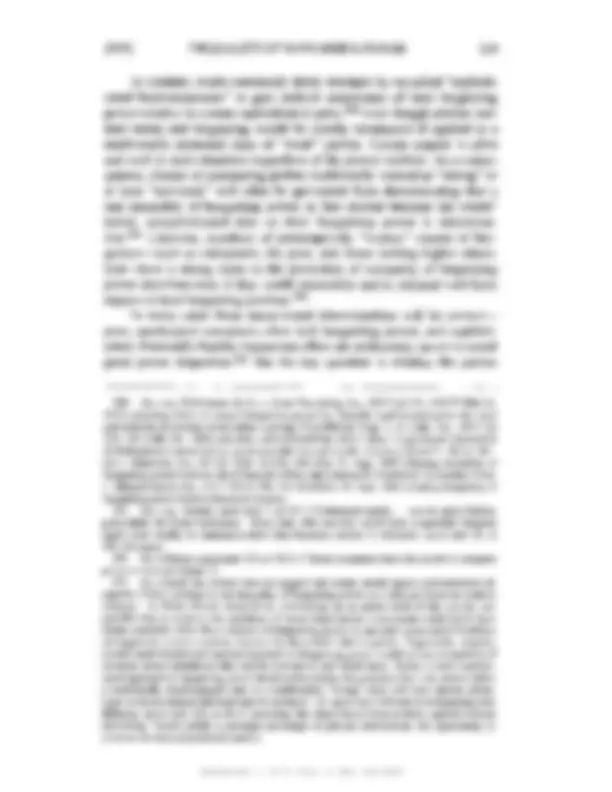
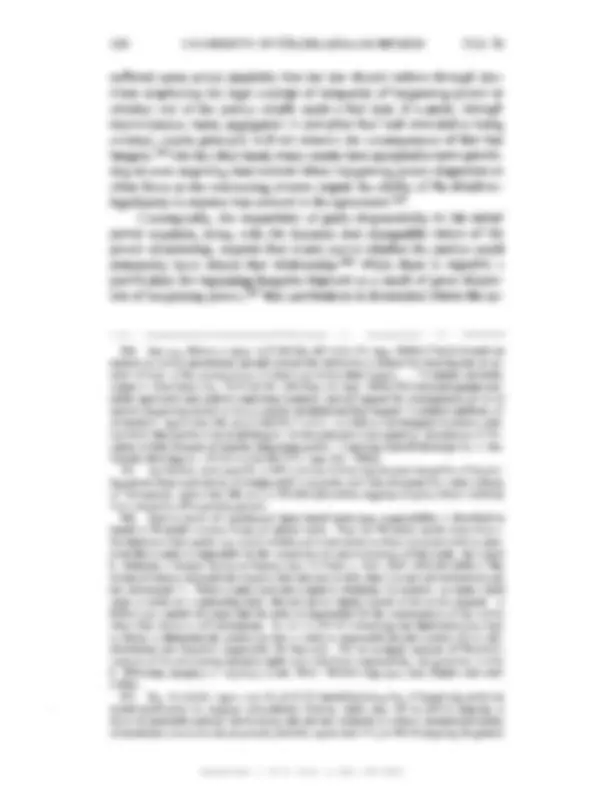
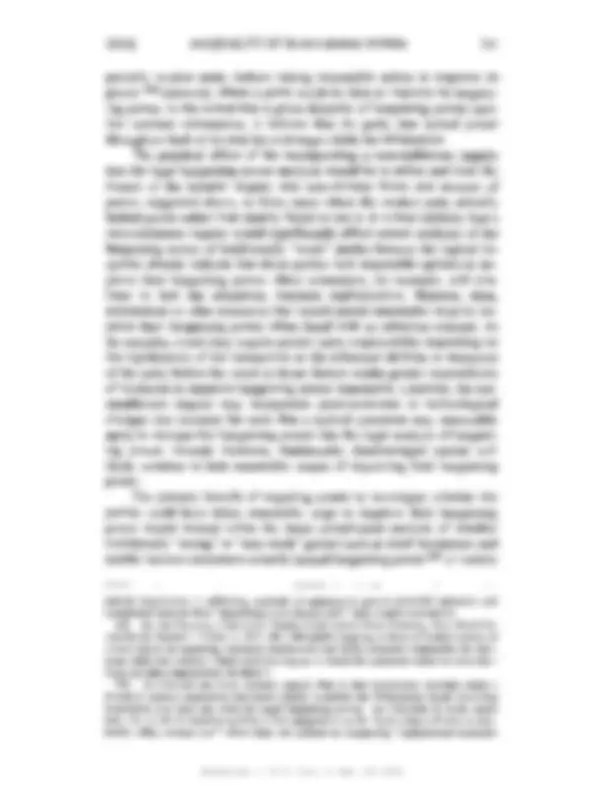
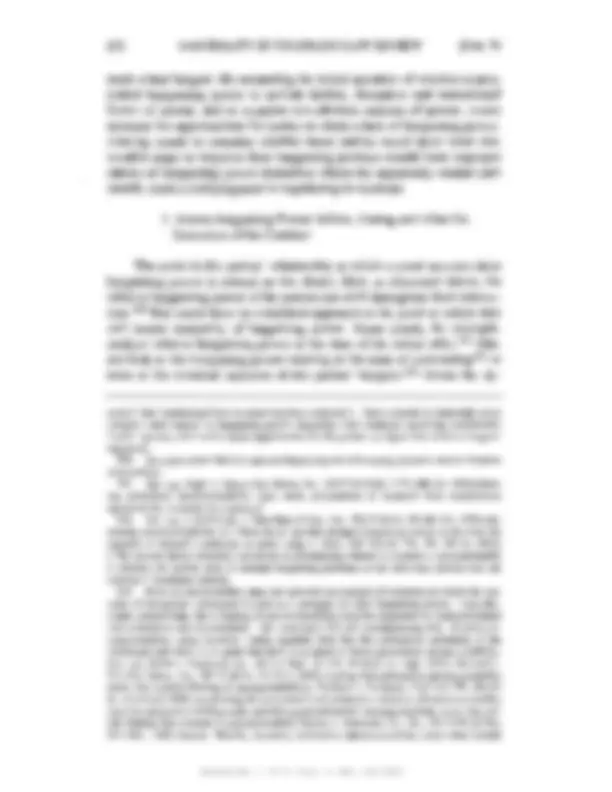
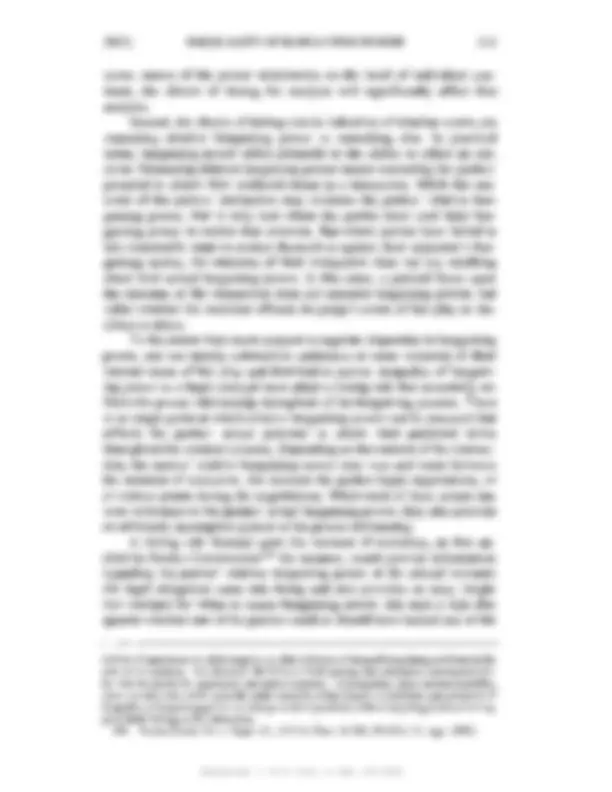
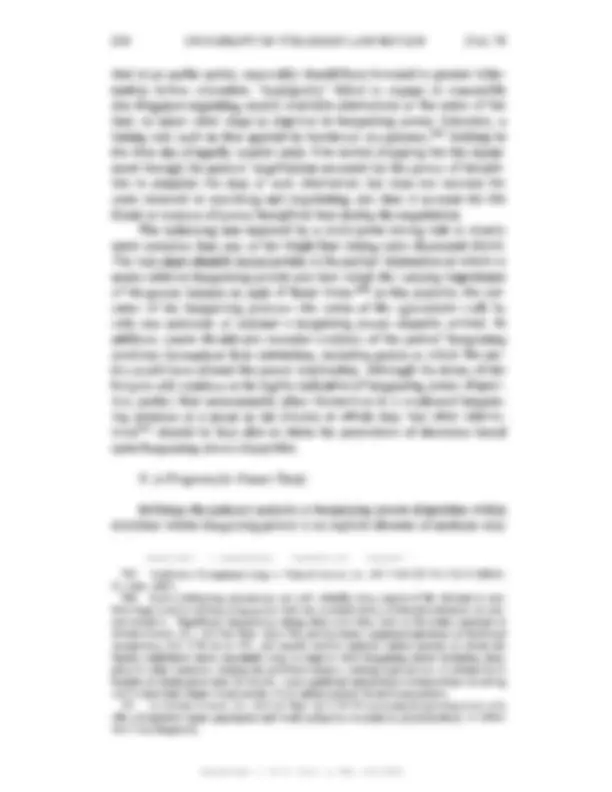
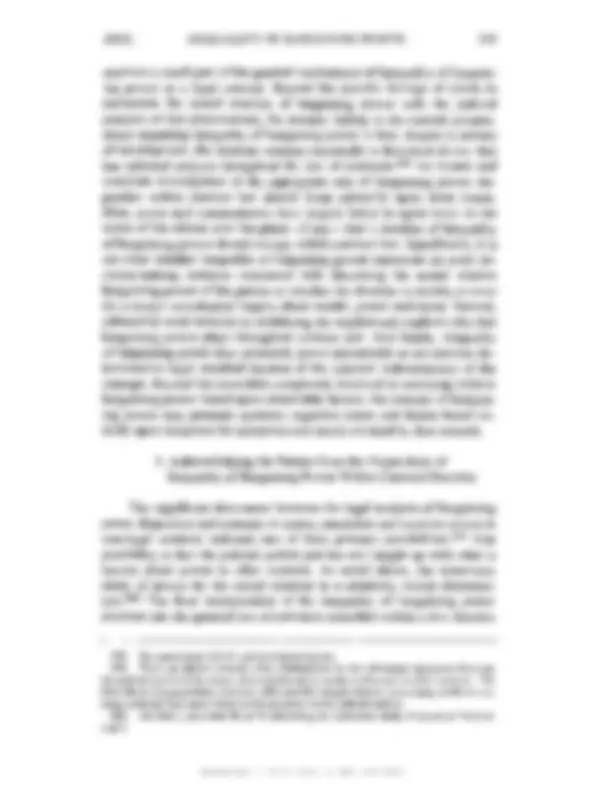
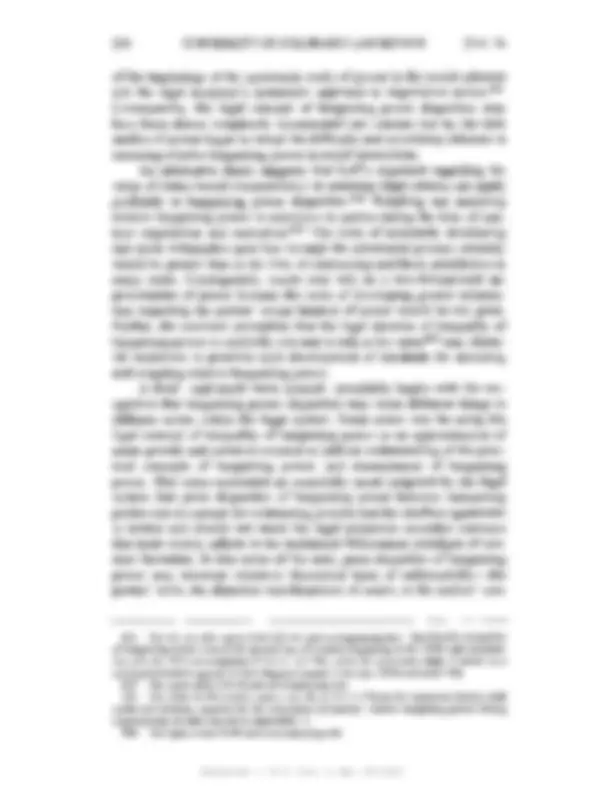
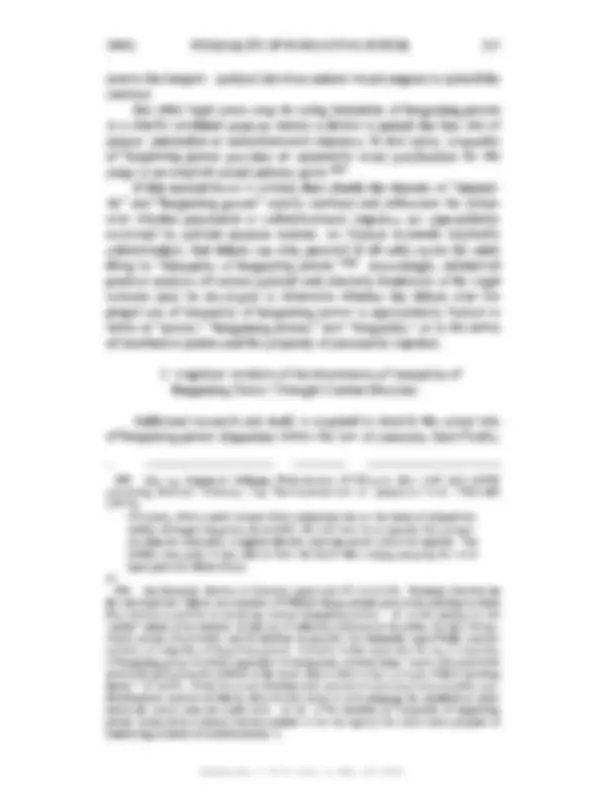
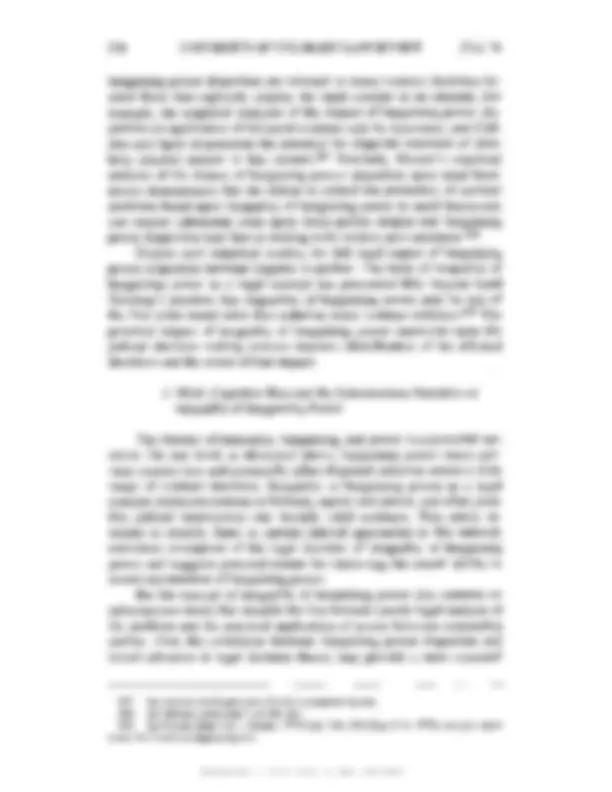


Study with the several resources on Docsity

Earn points by helping other students or get them with a premium plan


Prepare for your exams
Study with the several resources on Docsity

Earn points to download
Earn points by helping other students or get them with a premium plan
Community
Ask the community for help and clear up your study doubts
Discover the best universities in your country according to Docsity users
Free resources
Download our free guides on studying techniques, anxiety management strategies, and thesis advice from Docsity tutors
analysis.4 But inequality of bargaining power also affects analysis of many other contract doctrines, including, inter alia, defenses, remedies,.
Typology: Slides
1 / 104

This page cannot be seen from the preview
Don't miss anything!





























































































thanks Professors Blake D. Morant, Craig Callen, Gregory Mitchell, Robert Adler, Adam Mossoff, Brian KaIt, Charles Ten Brink, and Michael Lawrence, as well as valued colleague Anthony Franze, for their insight, comments and constructive critique. Additionally, Research Assistants Linda Paynich and Andrea Zydron, and the Michigan State University College of Law Research Librarians provided invaluable research assistance throughout this project. Without the assistance of these individuals, this Article would not have been possible.
140 UNIVERSITY OF COLORADO LAW REVIEW [Vol. 76
VI. CONCLUSION ................................................................................. 240
An honest list of [law school] course descriptions might look some- thing like this: ... Contracts. Study rules based on a model of two-fisted
negotiators with equal bargaining power who dicker freely, voluntarily
agree on all terms, and reduce their understanding to a writing intended
to embody their full agreement. Learn that the last contract fitting this
model was signed in 1879. 1
I. INTRODUCTION
Power. How to get it, keep it, and use it have been central questions
of politics, business, military strategy, and human relationships for mil-
lennia-from the military genius of Sun Tzu^2 to the fictional mob leader~
ship of Tony Soprano. 3 This extended study of power has yielded a
wealth of nuanced and sophisticated models for assessing, maintaining or
altering the balance of power in relationships. As a result, the practical,
[d.
Been reading that-that book you told me about. You know, The Art of War by Sun Tzu. I mean here's this guy, a Chinese general, wrote this thing 2400 years ago, and most of it still applies today! Balk the enemy's power. Force him to reveal himself. You know most of the guys that I know, they read Prince Machiabelli [sic], and I had Carmela go and get the Cliff Notes once and-he's okay. But this book is much better about strategy.
(^142) UNIVERSITY OF COLORADO LAW REVIEW [Vol. 76
analysis. 4 But inequality of bargaining power also affects analysis of
many other contract doctrines, including, inter alia, defenses, remedies,
consideration, contract interpretation, and the parol evidence rule. 5
Given the pervasiveness of the concept of bargaining power asym-
metries throughout contract law, the legal doctrine imposes substantial
costs upon actors who are traditionally viewed as possessing bargaining
power, including small businesses and middle-class consumers.6 Specifi-
cally, the legal concept of inequality of bargaining power discriminates
by not being open to all who suffer from real bargaining power dispari-
ties. As a result, truly disadvantaged parties are denied the benefits of the
doctrine while those that merely fall within stereotypically "weak" so-
cioeconomic classes benefit regardless of their actual bargaining powerJ
Part III analyzes the basic concept of power through illustrations
from a wide variety of contexts, including military strategy, political the-
ory, producer-consumer relations, and employment negotiations. Without
attempting to summarize the entire field, this Part analyzes the building
blocks of bargaining power disparities and concludes that power has
three characteristics that are critical for any legal analysis of relative bar-
gaining power in contracts. First, power is omnipresent in human rela-
tions-every actor has power of some kind and to some degree. 8 Second,
power is complex. It is a highly situational phenomenon arising from a
large number of potential sources and taking varied forms that may not
be obvious to the observer.^9 Third, power is dynamic. 10 Any power rela-
tionship can change dramatically and instantaneously, depending on the
actors, their preferences, their relationships with other actors, and any of
a multitude of additional strategic inputs.
Even though power relationships are clearly complex and dynamic,
courts approach certain claims of inequality of bargaining power as if
power relationships depend upon limited inputs and remain fixed over
time. As discussed in Part IV, the modem approach to inequality of bar-
gaining power as a legal concept ignores the practical operation of
power, instead focusing upon ad hoc generalizations drawn from the
class struggles of the last 150 years. I I Applying typical legal standards
4. See infra note 18 and accompanying text. 5. See sources cited infra notes 20-48 and accompanying text. 6. See infra notes 38-48 and accompanying text. 7. See Blake D. Morant, The Questfor Bargains in an Age of Contractual Formalism: Strategic Initiatives for Small Businesses, 7 J. SMALL & EMERGING BUS. L. 233, 237 (2003) (analyzing negative impact of fonnalistic contract doctrines that deny small businesses protec- tion of contract rules based upon inequality of bargaining power). 8. See infra notes 82-100 and accompanying text. 9. See infra notes 101-61 and accompanying text. 10. See infra notes 162-212 and accompanying text. II. See sources cited infra notes 224-28 and accompanying text.
2005] INEQUALITY OF BARGAINING POWER 143
for assessing bargaining power such as availability of meaningful alter- natives,12 opportunity to negotiate,13 and traditional status-based classi- fications l4^ without regard to the practical analysis of power, courts ig- nore real power disparities in favor of limited, incomplete, and often incorrect legal conceptions of bargaining power asymmetries. Finally, Part V concludes that the dynamic nature of power relation- ships and the inability of courts to identify standards for assessing power relationships mean that the legal concept of inequality of bargaining power as presently understood and applied is incapable of correctly guid- ing judicial discretion. If courts continue to apply legal consequences to perceived inequalities of bargaining power without conforming the legal doctrine to the practical use of power, 15 then the legal system's attempts to regulate the actual abuse of superior bargaining power will never be effective. First, courts must begin to address power strategically, not tacti- cally. 16 In so doing, they should assess actions the parties could reasona-
12. See infra Part IV.B.l.a. 13. See infra Part IV.B.l.b. 14. See infra Part IV.B.2.
Many contract defenses seem to reflect implicit attempts to regulate bargains between parties apparently suffering from a gross disparity of bargaining power. For example, English courts in the 1970s toyed briefly with a legal rule that would permit invalidation of contracts between par- ties of grossly disparate bargaining power. In Lloyd's Bank Ltd. v. Bundy,20 Lord Denning explicitly suggested that bargaining power dis- parities formed the common denominator among equitable and legal de- fenses to contract:
would suggest that through all these instances there runs a single thread. They rest on "inequality of bargaining power. " By virtue of
property for a consideratipn which is grossly inadequate, when his bargaining power is grievously impaired by reason of his own needs or desires, or by his own ignorance or infirmity, coupled with undue
English courts, however, quickly rejected Denning's proposed ine- quality of bargaining power doctrine as unworkable. 22 But Denning's in-
21. Id. at 339 (Lord Denning) (emphasis added); see also A. Schroeder Music Publishing Co. v. Macaulay, [1974] 3 All E.R. 616 (H.L.) (Lord Diplock) (justifying refusal to enforce non-competition clause in musician-publisher standard form agreement on basis of inequality of bargaining power); Spencer N. Thai, The Inequality of Bargaining Power Doctrine: The Problem of Defining Contractual Unfairness, 8 OXFORD J. LEGAL STUD. 17, 17-19 (1988) (describing rise and fall of Lord Denning's attempt to institute inequality of bargaining power as a defense to contract). In addition to ThaI's excellent treatment of the English experiment with inequality of bargaining power as an independent defense to contract, see generally M.J. Trebilcock, The Doctrine of Inequality of Bargaining Power: Post-Benthamite Economics in the House of Lords, 26 U. TORONTO L. J. 359, 359 (1976) (describing Lord Denning's sugges- tion that "many of the traditional defences to contract enforcement, for example, duress, undue influence, breach of fiduciary duty, were properly seen as merely exemplary of a general doc- trine of 'inequality of bargaining power"'); Larry A. DiMatteo, Equity's Modification of Con- tract: An Analysis of the Twentieth Century's Equitable Reformation of Contract Law, 33 NEW ENG. L. REv. 265, 344-46 (1999) (describing Lord Denning's attempt to promote inequality of bargaining power doctrine so that "[i]nstead of needing to pigeonhole injustice or unfairness into one of the equitable safe havens, the court would give relief to anyone who entered into an unfair contract in which there was a significant inequality of bargaining power"); Thomas Glyn Watkin, The Spirit of the Seventies, 6 ANGLO-AM. L. REv. 119, 122-23 (1977). 22. See, e.g., Nat'l Westminster Bank v. Morgan, [1985]1 All E.R. 821, 830 (H.L.) (Lord Scarman) (explicitly rejecting Lord Denning's "general principle that English courts will grant relief where there has been 'inequality of bargaining power"'); Thai, supra note 21, at 19 (de- scribing rejection of inequality of bargaining power by English courts).
(^146) UNIVERSITY OF COLORADO LAW REVIEW [Vol. 76
sight still suggests that many contract defenses are essentially second or- der moral restraints that attempt to enforce a first order moral rule 23 to protect against some inequity related to the parties' relative bargaining power. The problem for Denning, of course, was that his broad notion of inequality of bargaining power was insufficiently nuanced to permit courts to determine consistently the appropriate legal consequences of such inequalities. American contract law likewise demonstrates a relationship be- tween contract defenses and the legal concept of inequality of bargaining power. As noted, bargaining power disparities continue to appear as an explicit element in unconscionability analyses. Other contract defenses, however, implicitly incorporate at least a sense of inequality of bargain- ing power. Duress and economic duress, for instance, attempt to deal with situations in which agreement has been coerced from an apparently weaker party through a bargaining power disparity resulting from a wrongful threat or action by the apparently stronger party.24 Thus, in Duress by Economic Pressure, John Dalzell noted that economic duress arises in those situations where one party-by reason of an advantage created by the parties' sequential performances-possesses momentarily greater bargaining power sufficient to coerce additional payments or new terms from the weaker party:
In these decisions the courts talk much of the inequality of the parties as a weighty argument for relief....
So far as inequality is to be considered, it is inequality in the particu- lar situation; and the corporate Goliath might have been in such im- mediate need of the wharfage rights there involved as to put it quite
23. See Eric A. Posner, The Decline of Formality in Contract Law, in THE FALL AND RISE OF FREEDOM OF CONTRACT 61, 68-69 (F.H. Buckley ed. 1999) (describing criticism that unconscionability doctrines, inter alia, "required direct application of moral theory, rather than the application of second-order rules"); cf John P. Dawson, Economic Duress and the Fair Exchange in French and German Law, 12 TuL. L. REV. 42, 62-72 (1937) (describing Nazi efforts to impose first order moral rules barring loans at greater than "customary rate of inter- est"). 24. See, e.g., United States v. Bethlehem Steel Corp., 315 U.S. 289, 300 (1942) ("The word duress implies feebleness on one side, overpowering strength on the other."); cf Richard A. Epstein, Unconscionability: A Critical Reappraisal, 18 J. L. & ECON. 293, 297 (1975) ("The question of duress is not that of the equality of bargaining power in a loose sense that refers to the wealth of the parties. It is the question of what means are permissible to achieve agreement. ").
148 UNIVERSITY OF COLORADO LAW REVIEW [Vol. 76
tations doctrine purports to regulate power imbalances between insurance
companies and their insureds by interpreting some insurance contracts to
conform to the reasonable expectations of the insured, regardless of the
actual language of the agreement. 30 Judges have invalidated specific con-
tract terms-particularly forum selection clauses-where the contract was obtained through "fraud, undue influence, or overweening bargain- ing power."31 And courts invalidate eXCUlpation clauses-lying at the crossroads of tort, contract, and public policy-"where the parties are not on roughly equal bargaining terms."32 Even the availability of certain
equitable remedies may depend upon the appearance of inequity created
by the presence of gross disparities of bargaining power.
plain language ofa contract of insurance.") (quoting Standard Venetian Blind Co. v. Am. Em- pire Ins. Co., 469 A.2d 563, 567 (Pa. 1983»; Votto v. Am. Car Rental, Inc., 35 Conn. L. Rptr. 17,2003 WL 21716003, at *2 (Conn. Super. Ct. June 16,2003) ("The concept that a contract of adhesion should be interpreted and enforced differently from an ordinary contract has evolved from cases which have involved contractual provisions drafted and imposed by a party enjoying superior bargaining strength .... ") (quoting Madden v. Kaison Found. Hosps. 552 P.2d 1178,1186 (Cal. 1976».
30. See, e.g., Smith v. Westland Life Ins. Co., 539 P.2d 433, 440-42 (Cal. 1975) (inter- preting ambiguity in insurance contract against insurer and holding insurer bound by insured's reasonable expectations of coverage upon premium payment absent unambiguous term to the contrary and actual explanation of restrictive term to insured); Werner Indus. v. First State Ins. Co., 548 A.2d 188, 192 (N.J. 1988) (rejecting application of reasonable expectations doctrine for commercial risk policy because "both sides of the bargaining table ... were sophisticated with regard to insurance"); see also Robert E. Keeton, Insurance Law Rights At Variance with Policy Provisions, 83 HARV. L. REv. 961,967 (1970) ("reasonable expectations" doctrine de- scribes practice of courts varying plain terms of written insurance contract to reflect purported reasonable expectations of insured). But see Wilkie v. Auto-Owners Ins. Co., 664 N.W.2d 776, 782 (Mich. 2003) (reasonable expectations doctrine "is contrary to the bedrock principle of American contract law that parties are free to contract as they see fit").
2005] INEQUALITY OF BARGAINING POWER^149
En/orcibility 0/ a Promise Not to Compete After an Employment at Will, 29 Colum. L. Rev.
2005] INEQUALITY OF BARGAINING POWER 151
to the contract offered them or could not have negotiated the contract terms simply because that party was poor, uneducated, or a member of a traditionally disadvantaged class. 4o On the other hand, courts and commentators often ignore bargaining power issues relating to parties outside stereotypically "weak" catego- ries. The most obvious victims of the incomplete development of the le- gal doctrine of inequality of bargaining power are middle class consum- ers and small business owners. For instance, Blake Morant's recent empirical study of bargaining behavior by small businesses determined that the rigid and formalistic conception of bargaining power disparities that most courts employ combined with a competitive free market effec- tively denied small businesses access to equitable agreements. 41 Simi- larly, other commentators have recognized that explicit relief for bargain- ing power disparities through unconscionability or adhesion contract doctrines are reserved almost exclusively for consumers and the poor. But in light of the gross disparities of bargaining power that often exist between small businesses and their vendors and customers, and given the importance of small businesses to the American economy in general,
40. See infra notes 243-52, Part IV.B.2. and accompanying text. 41. See Morant, supra note 7, at 267. 42. See, e.g., Adler & Silverstein, supra note 26, at 48 ("The vast majority of successful unconscionability claims involve poor, often unsophisticated, consumers challenging oppres- sive adhesion contracts foisted on them by retail merchants or credit sellers. In fact, the courts have generally been unreceptive to unconscionability claims by middle class purchasers or by merchants against other merchants.") (emphasis added) (citation omitted); Jane P. Mallor, Unconscionability in Contracts Between Merchants, 40 Sw. L. J. 1065, 1066-67 (1986) (dis- cussing general hostility to claims of unconscionability by merchants); cf 2A RONALD A. ANDERSON, ANDERSON ON THE UNIFORM COMMERCIAL CODE §§ 2-302:108, :126, :128 (3d ed. 1997) (observing generally that inequality of bargaining power can support unconscionabil- ity finding in both commercial and non-commercial settings, but noting "[a]lthough a com- mercial setting does not necessarily bar a claim of unconscionability, it is the exceptional commercial setting where a claim of unconscionability will be allowed") (surveying cases). Even legislative attempts to address perceived bargaining power disparities often fail to ad- dress real inadequacies experienced by small businesses. See, e.g., Pamela Edwards, Into the Abyss: How Party Autonomy. Supports Overreaching through the Exercise of Unequal Bar- gaining Power, 36 1. MARSHALL L. REv. 421, 455 (2003) (noting that legislation mandating enforcement of choice of law clauses creates exceptions for consumers "to protect individuals who are thought of as tending to have lesser bargaining power" but ignores unequal bargaining power between commercial entities). But cf W. DAVID SLAWSON, BINDING PROMISES: THE LATE 20TH CENTURY REfORMATION OF CONTRACT LAW 143 (1996) (arguing that "[c]ourts now apply the unconscionability defense to business consumers and individual consumers without distinction") (citing Mallor, supra); Eleanor Holmes Norton, Bargaining and the Ethic of Process, 64 N.Y.U. L. REv. 493, 554 (1989) (noting increasing attempts to apply uncon- scionability standards to merchant-to-merchant contracts, but describing such attempts as "preembryonic" and limited to "exceptional and atypical cases"). 43. See, e.g., Morant, supra note 7, at 239-44 (discussing the importance of small busi- nesses to U.S. economy); MANSEL G. BLACKFORD, A HISTORY Of SMALL BUSINESS IN AMERICA xiii-xv, 124 (1991) (same); OFFICE OF ADVOCACY, U.S. SMALL Bus. ADMIN., TOP
the unavailability of remedial contract doctrines to such entItIes may
have real and significant negative impacts upon economic activity.
The impact of this incomplete and undeveloped approach to assess- ing the legal import of bargaining power asymmetries between contract- ing parties is significant. A more sophisticated approach to legal analysis of bargaining power may appear at first blush to offer little to stereotypi-
cally "weak" contracting parties. Such generalizations regarding per-
ceived bargaining power may accurately reflect the actual bargaining
power of individuals fitting the generalization. As a practical matter,
poor individuals often do lack bargaining power-the power to obtain a
preferred outcome in a transaction-in many situations and are often sys-
tematically deprived of the ability to offer meaningful consent to prof-
fered contracts.
But those same generalizations may also arise from the private bi-
ases of judges and other observers. Ultimately, biased stereotypes of
weakness may be destructive to the well-being and social integration of
the affected class. Thus, as some have argued, judicial interventions to
"correct" perceived bargaining power disparities may help individual
litigants in the short term but ultimately prove harmful in terms of social
perceptions and additional contracting costs imposed on the class. 45
For parties who typically fall outside of the "weak" status- classifications, however, the benefits of a sophisticated and fully-
developed bargaining power jurisprudence would be significant. Under
current treatments of the doctrine, for example, small businesses and
10 REASONS TO LOVE SMALL BUSINESS (February 13, 2004) (noting, inter alia, that small businesses make up over 99.7% of employers, "create more than 50 percent of the nonfarm private gross domestic product," and create 75% of net new jobs), http://www.sba.gov/advo /press/04-06.html. Beyond the substantial direct economic benefits from production and em- ployment, small businesses also employ disproportionate numbers of women and minority in- dividuals. See BLACKFORD, supra at 58-60, 117-20, and 124 ("To the extent that they suc- ceeded at all in business management and ownership, women and minorities moved ahead in small finns."); Morant, supra note 7, at 242 (discussing importance of women and minority- owned businesses). Additionally, the existence and prevalence of small businesses are a foun- dation stone in our national mythos. Although unquantifiable, that psychological symbolism has been recognized as an important benefit of small business participation in the American economy. See, e.g., A.D.H. KAPLAN, SMALL BUSINESS: ITS PLACE AND PROBLEMS 3- (1948) (describing post-World War II sentiment that independence symbolized by small busi- nesses contrasted sharply with centralized economies and totalitarian regimes and offered every individual the possibility "of becoming his own boss"); BLACKFORD, supra at xiv ("[M]any Americans have seen the owners of small businesses as epitomizing all that is best about the American way of life.").
44. See Morant, supra note 7, at 245-46 (assessing impact of inability to obtain relief for bargaining power disparities on small businesses). 45. See infra notes 330-38 and accompanying text (discussing potential negative impacts of legal narratives regarding participants in the legal system for their personal and social well- being).
body of knowledge in favor of gut-level conclusions regarding the rela-
tive power of the parties before them. The development of a sophisticated legal approach to analyzing
power issues requires an understanding by legal decisionmakers and
commenters of how parties use and assess power in real-world applica- tions. Part III.A begins this process by examining practical definitions of the concept of "power" both within and without the legal system and the inherent difficulties in isolating a definition that can work in the legal context. Part III.B continues by crafting a framework for assessing dif- ferent forms of power. Specifically, power is omnipresent, complex, and dynamic. All actors have some form of power in their relationships, the phenomenon of power is incredibly complex and may take on forms not readily apparent to legal observers, and power relationships have the ca- pacity to change dynamically at any time throughout the relationship. By recognizing these fundamental characteristics of power, legal decision- makers may be better able to craft the nuanced models of power relation- ships necessary to assign credible legal responses to practical uses of power.
A. Definitions of Power
Power has long eluded adequate definition. As one prominent social theorist stated, power describes something key to the human experience:
That some people have more power than others is one of the most palpable facts of human existence. Because of this, the concept of power is as ancient and ubiquitous as any that social theory can boast. If these assertions needed any documentation, one could set up an endless parade of great names from Plato and Aristotle through Ma- chiavelli and Hobbes to Pareto and Weber to demonstrate that a large number of seminal social theorists have devoted a good deal of atten- tion to power and the phenomena associated with it. 49
Despite this attention, the systematic study of power as a social and
political phenomenon is a recent development. 50 Even in the social and
political sciences, where it might be expected that some clarity would be
achieved given the integral role of power, scholars have failed to estab- lish a commonly accepted or clear definition. 5 I
2005] INEQUALITY OF BARGAINING POWER 155
"Power" is elusive because the word is often used to define and de- scribe many different aspects of the human experience. 52 Power typi- cally describes-in courts, politics, war, sports, and other contexts-an ability to affect or obtain a preferred outcome. 53 But beyond such gener- alities, further attempts to produce a unified definition disintegrate into such disputes as arguments over the source(s) ofpower;54 whether power
ter?, 7 J. PUB. ADMIN. REs. & THEORY 247 (1997) (surveying past attempts to define power in social and political sciences and noting wide disagreements over definitions).
52. See, e.g., Dahl, supra note 49, at 79 (describing cynical suspicion that power may be "a Thing to which people attach many labels with subtly or grossly different meanings in many different cultures and times [such that it] is probably not a Thing at all, but many Things"). 53. See, e.g., Adler & Silverstein, supra note 26, at 8 ("Most observers agree that the critical element of power is the ability to have one's way, either by influencing others to do one's bidding or by gaining their acquiescence to one's action."); SLAWSON, supra note 42, at 23 ("Bargaining power is the power to set the terms of a contract."); JEFFREY PFEFFER, POWER IN ORGANIZATIONS 2 (1981) [hereinafter PFEFFER, POWER] ("Most definitions of power include an element indicating that power is the capability of one social actor to over- come resistance in achieving a desired objective or result."). Even this basic definition is in- complete. For example, to the extent that the definition implies a contest between two actors, many negotiators would argue that it assumes a zero sum game in which one side must lose in the power relationship for the other to gain. See, e.g., Talcott Parsons, On the Concept of Po- litical Power, in POLITICAL POWER: A READER IN THEORY AND RESEARCH, supra note 49, at 251, 251-52 (noting tendency of social theorists to assume power is a zero-sum phenomenon and that there is a fixed quantity of power available in relation systems); see also PFEFFER, POWER, supra at 4-6 (suggesting that exercise of raw power imposes costs, while exercise of legitimate power-i.e., authority-"far from diminishing through use, may actually serve to enhance the amount of authority subsequently possessed"). Fisher and Ury famously shifted the negotiation paradigm a little over two decades ago in advocating a problem-solving ap- proach to bargaining. See ROGER FISHER ET AL., GETTING TO YES: NEGOTIATING AGREEMENT WITHOUT GIVING IN 9-14 (2d ed. 1991). Within this new paradigm, bargainers seek to maximize value for both sides by recognizing their mutual interests and attempting to craft a "win-win" solution. See generally id. at 17-94. Importantly, while Fisher and Ury ac- knowledged the existence of bargaining power disparities in some situations, id. at 97 ("[n]o method can guarantee success if all the leverage lies on the other side"), they also noted that in cooperative bargaining, power arises, inter alia, from developing good alternatives to negoti- ated agreements and crafting agreements based upon options for mutual gain. See id. at 56-80, 97-106. Other sources of bargaining power in the problem-solving paradigm include develop- ing good working relationships with the opposing party, understanding interests, inventing elegant options, and using external standards oflegitimacy. See id. at 179-183. 54. See, e.g., GEOFFREY DEBNAM, THE ANALYSIS OF POWER: CORE ELEMENTS AND STRUCTURE 1 (1984). Debnam describes three schools of thought on the structure of power. The reputational or elitist school presumes that power is "socially structured, and that its study must start from a statement of the nature of its structure." [d. In contrast, the decision-making school-associated primarily with Robert DahI-"denie[ s] that power is necessarily struc- tured ... and arguers] that the only valid evidence about power [is] to be derived from a study of action in the decision-making arena." [d. The third school-the neo-elitists-argues that the operation of power within social structures is generally diffuse and therefore requires "greater sensitivity to problems of evidence" in assessing that operation. [d. This third ap- proach parallels the central thesis of this Article that the judicial approach to assessing power relationships focuses only on simple social structures as the source of power imbalances be- tween actors and must adapt to recognize that power is a complex and sophisticated phenome-
2005] INEQUALITY OF BARGAINING POWER^157
definition has accurately captured either power in general or the totality
of its component elements. 69
The disagreements surrounding every aspect of power flow into the legal arena where courts appear especially reticent to grapple with the
exercise of power, or even acknowledge its existence outside of a few
discrete forums. On the one hand, "power" often substitutes for the de-
rivative concept of "authority"-the ability of the state, through its agents, to coerce individual actors within the polity into obeying the sov- ereign's commandsJo In this sense, power always connotes the sover-
eign's right to enforce individual compliance through the state's monop-
158 UNIVERSITY OF COLORADO LAW REVIEW [Vol. 76
oly on the legitimate use of force. Applied correctly, such coercion may
be ''justified on the ground that it allows all individuals to achieve a
higher state of well-being than they could do by their own efforts .... "
Power also may refer to the legal capacity or authorization to do
some act.^72 Used in this way, power concerns the capacity of individuals
to enter enforceable agreements on their own behalf. Courts specifically
investigate and analyze this concept of power, for example, in cases of infancy, incompetence or inebriation. The "capacity" connotation of
power also represents the idea of the right or authority to enter into bind-
ing commitments on behalf of others, as with agency and competency. 73 The connotation of power as capacity still relates loosely to the "au-
thority" dimension in that it describes that set of agreements not subject
to enforcement through operation of the power of the state by appeal to
the sovereign authority. The sovereign has declared that in cases of inca-
pacity it has removed from the incapacitated person some or all power or
authority to bargain legally. Those who bargain with the incapacitated may be denied the benefits of their "tainted" bargain 74 as the state re- fuses the competent party seeking enforcement access to its coercive ma- chinery. Even the sovereign's control of the economic regulatory scheme governs the capacity of actors within that regime to determine the out- come of their interactions with other actors. Thus, the economic regime itself-the recognition of a need to regulate the distribution of scarce re- sources among individuals with varying demands for those resources- may be said to be inherently coercive.7 5 Importantly, participants within